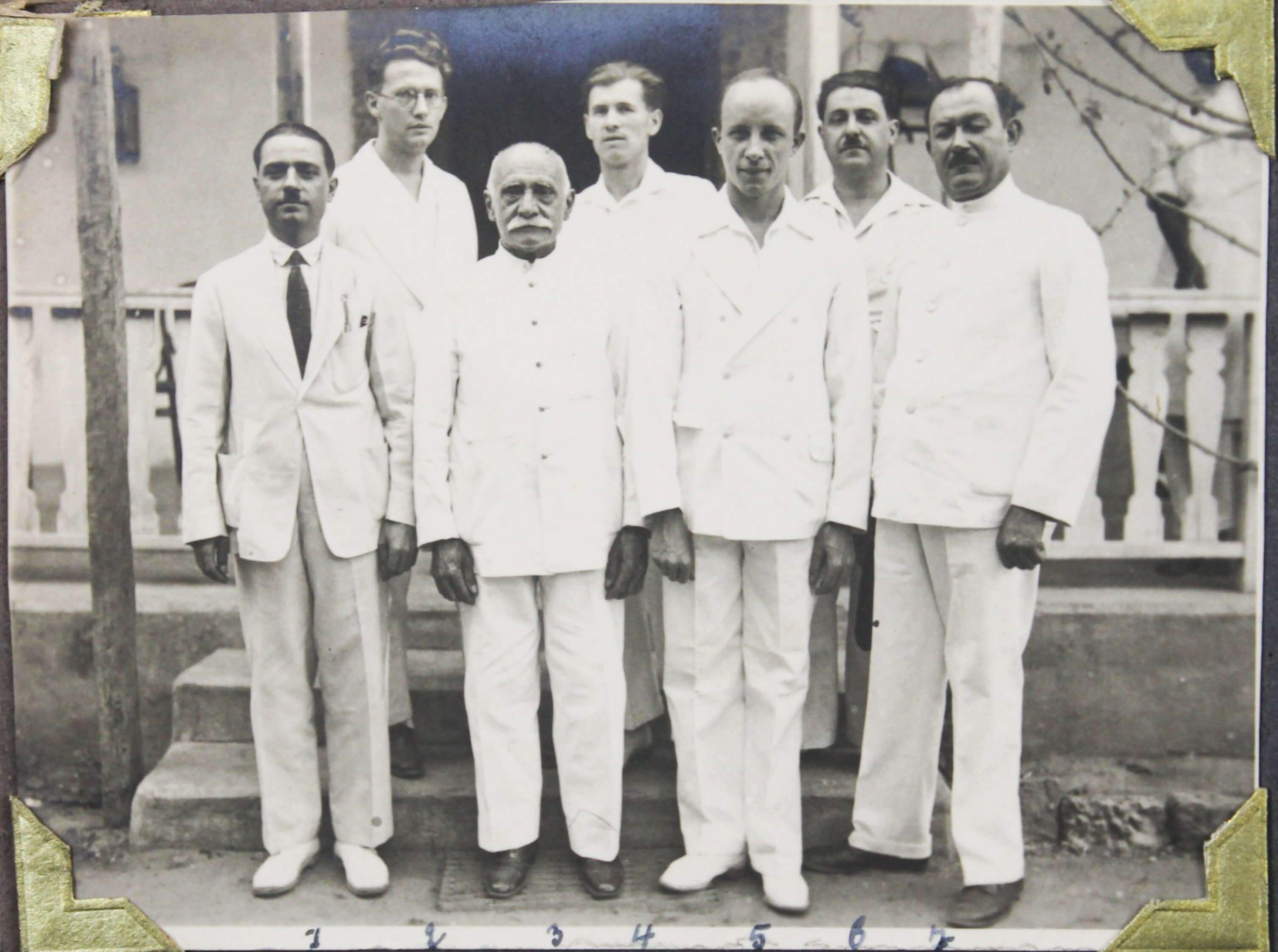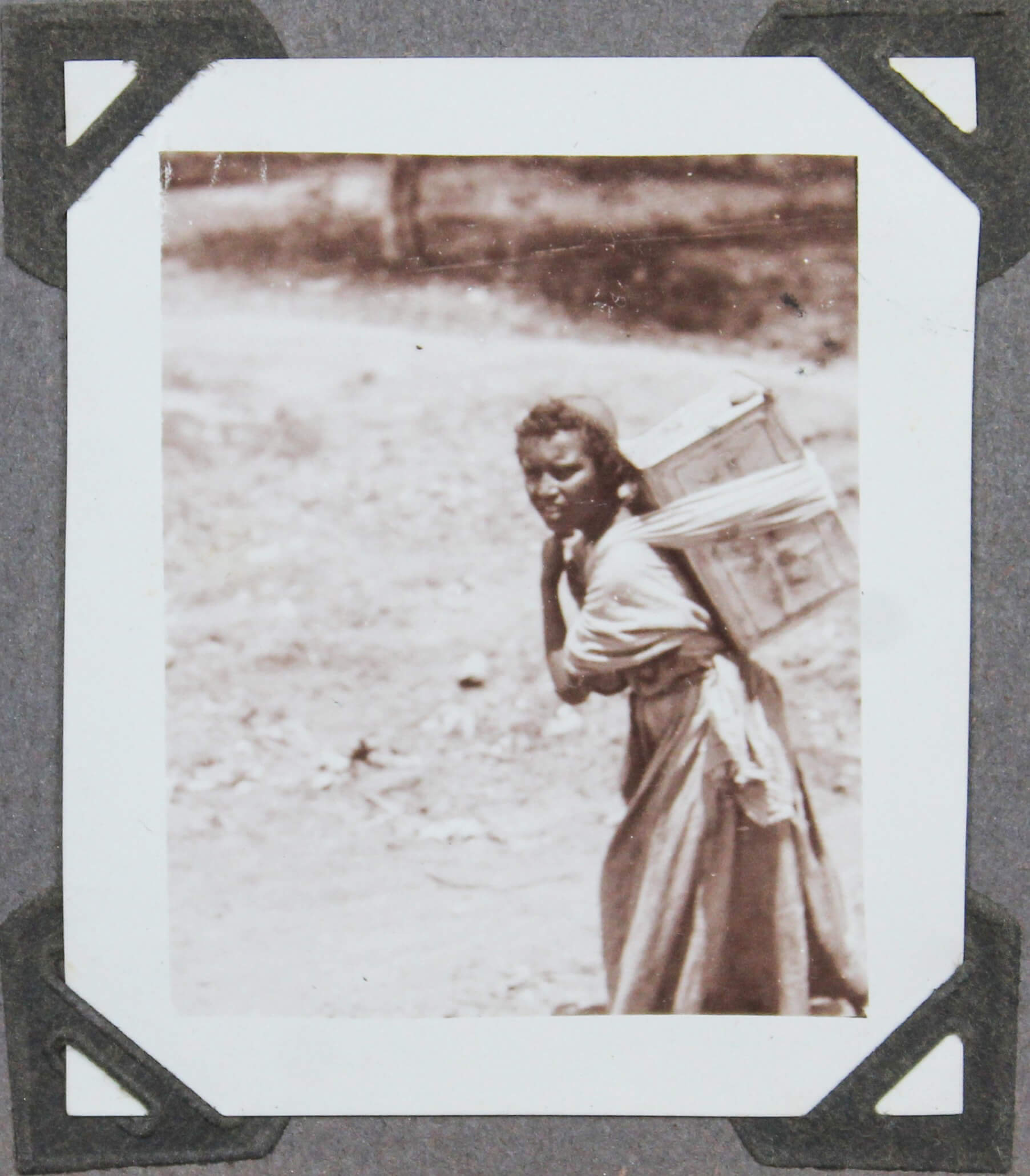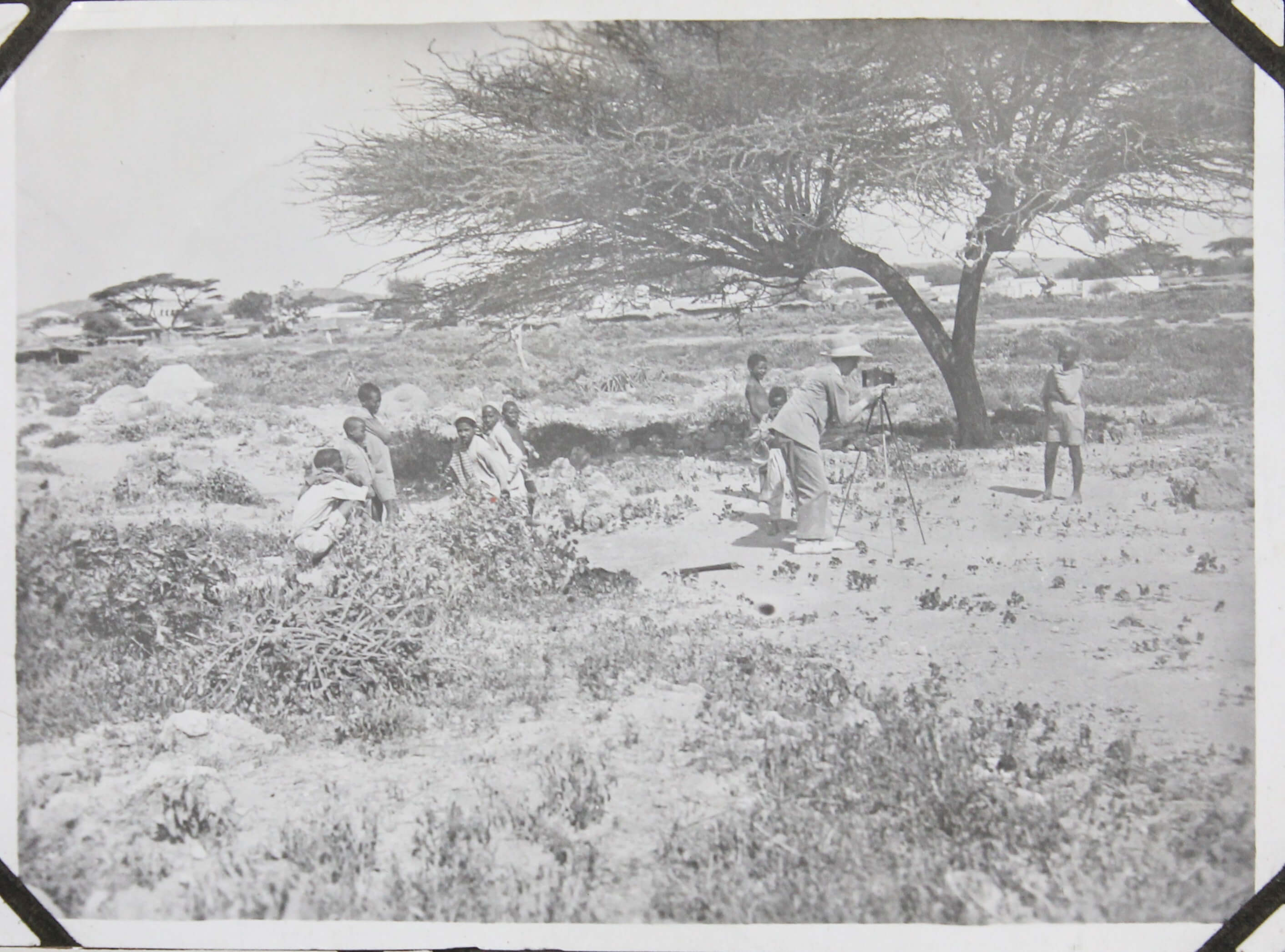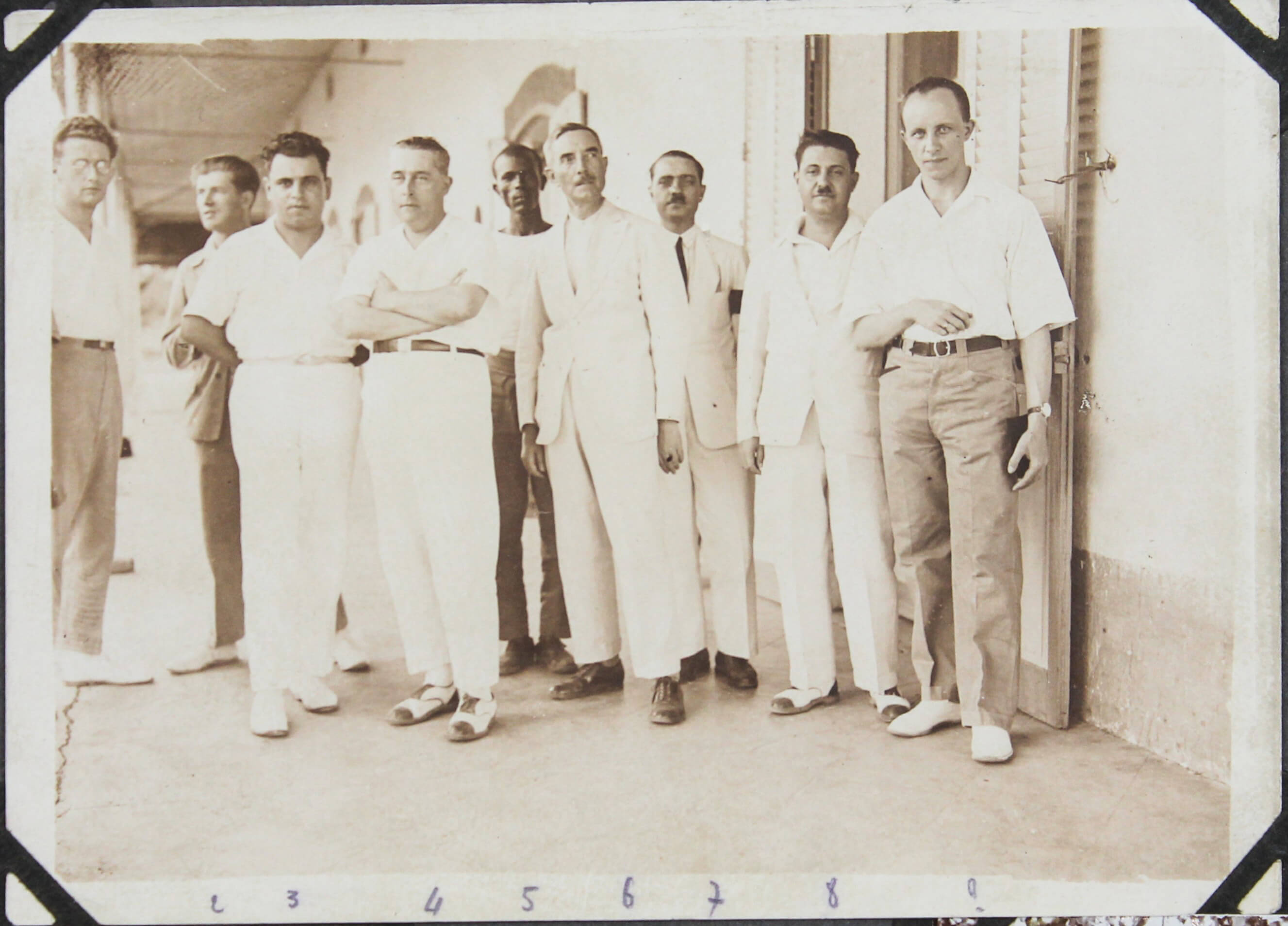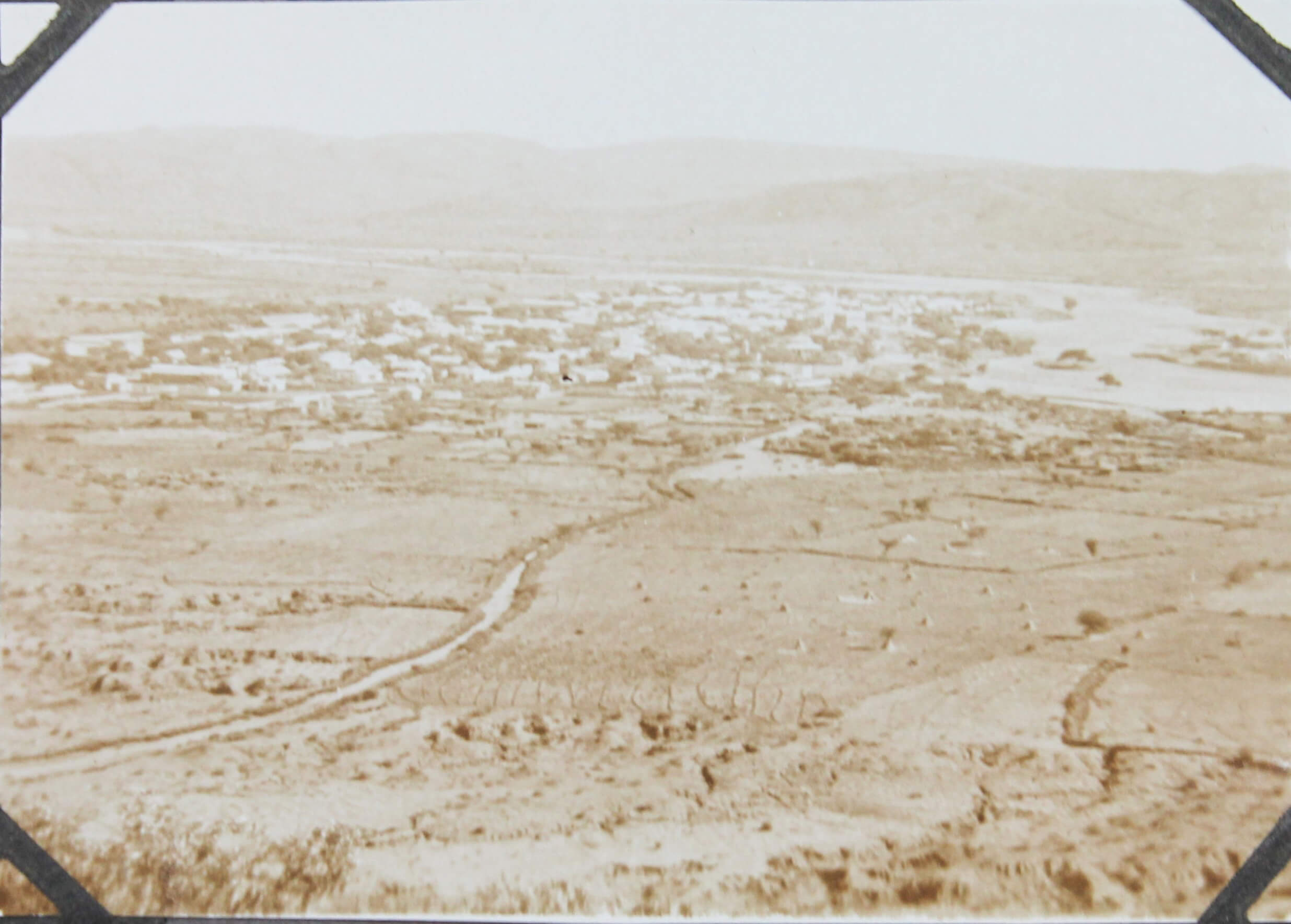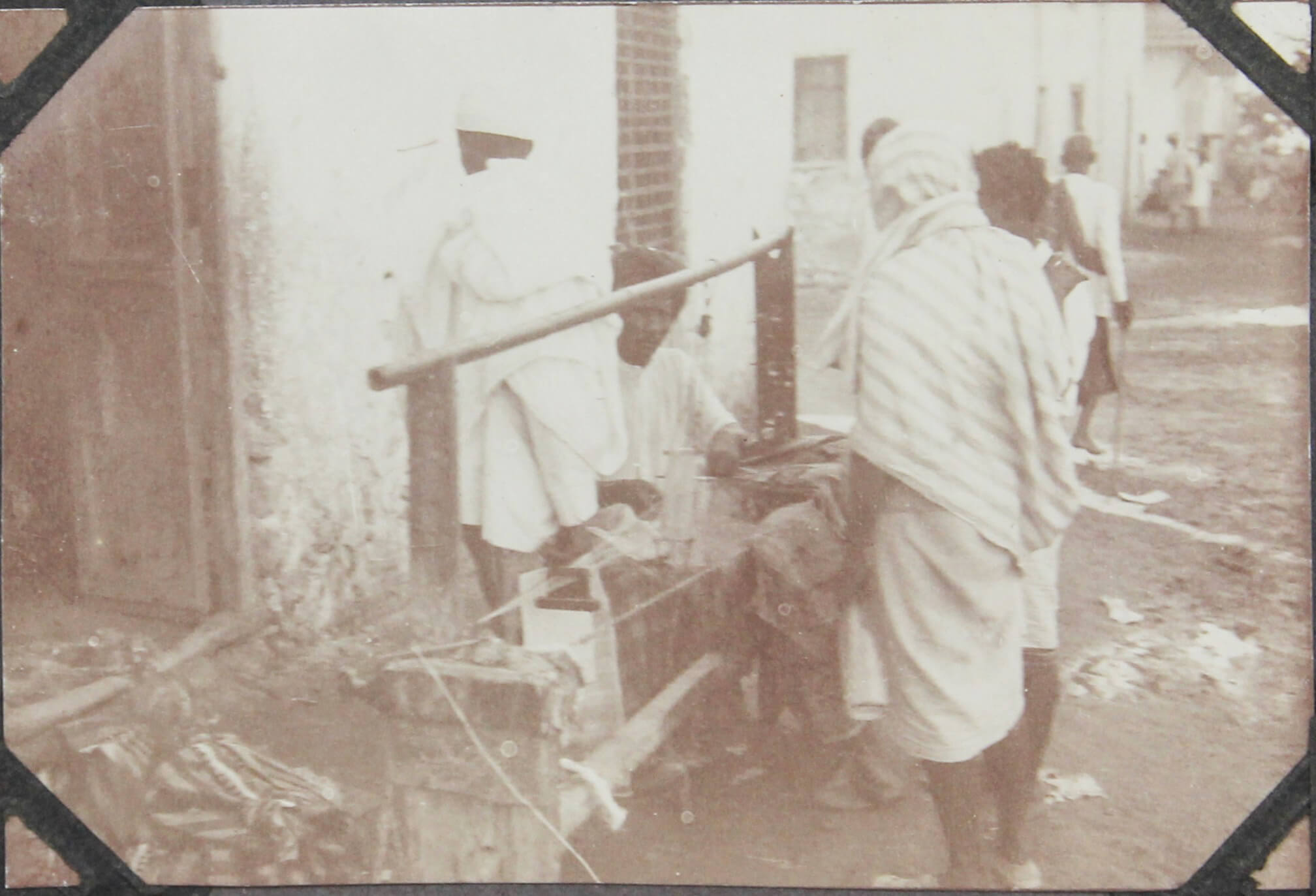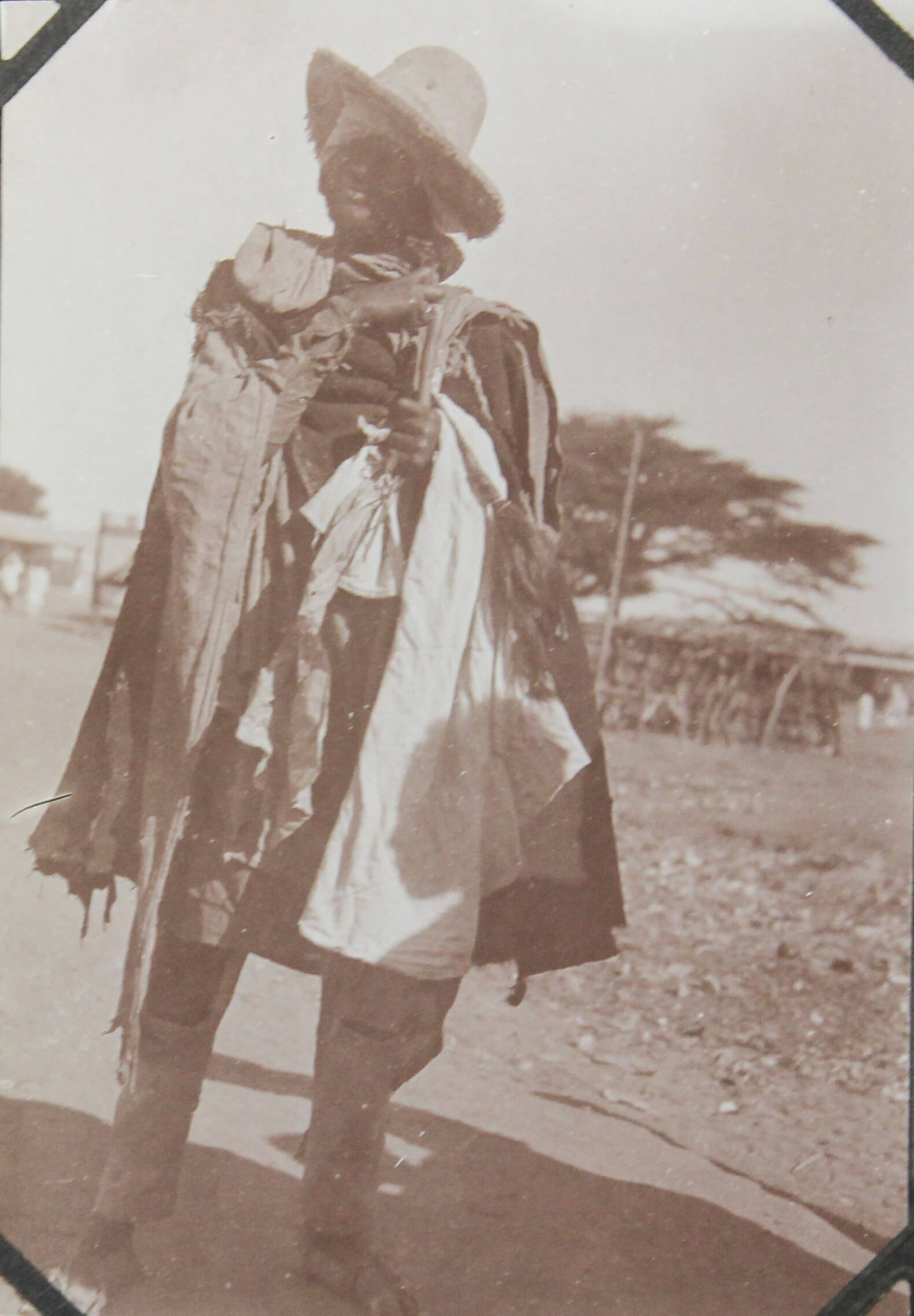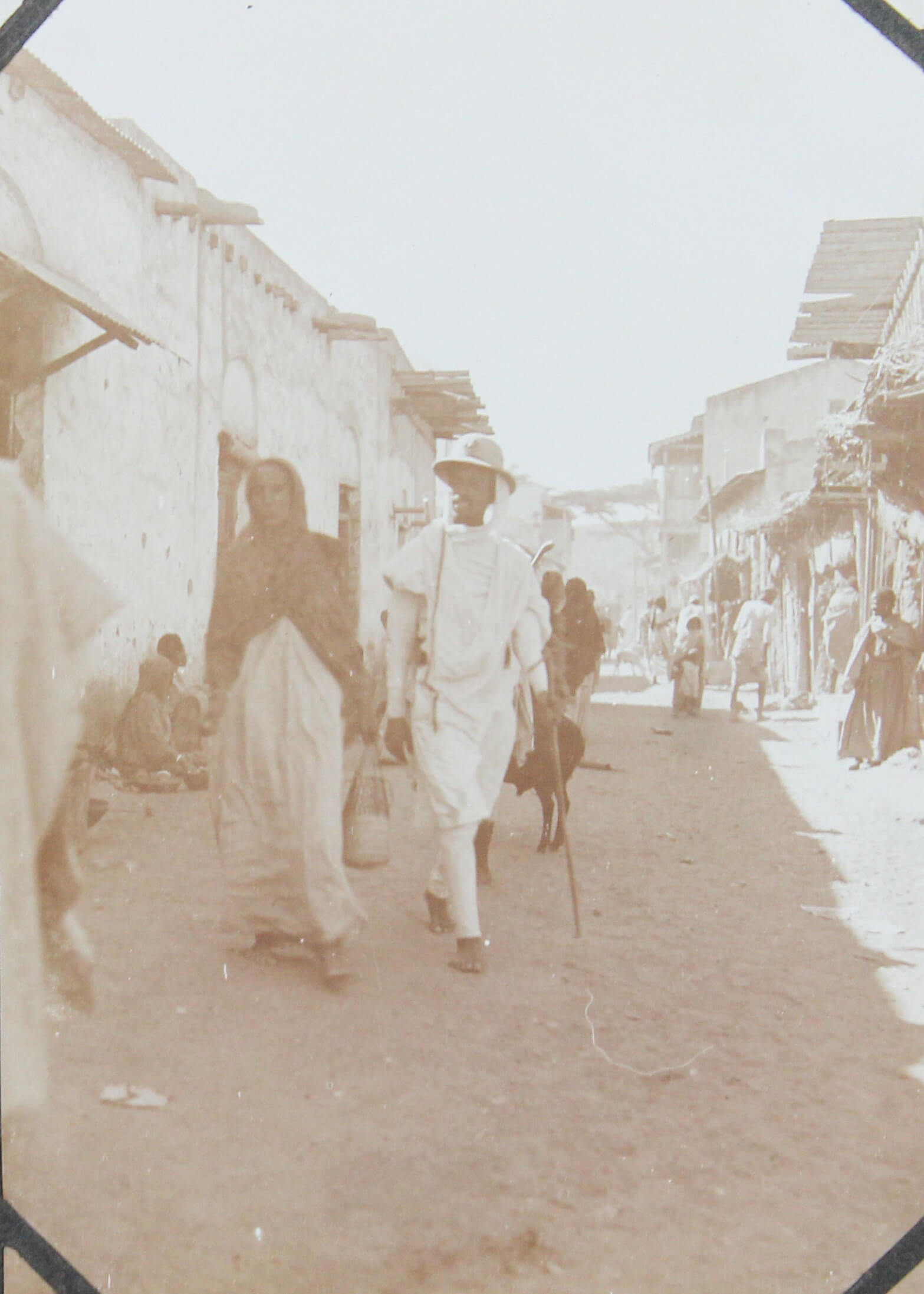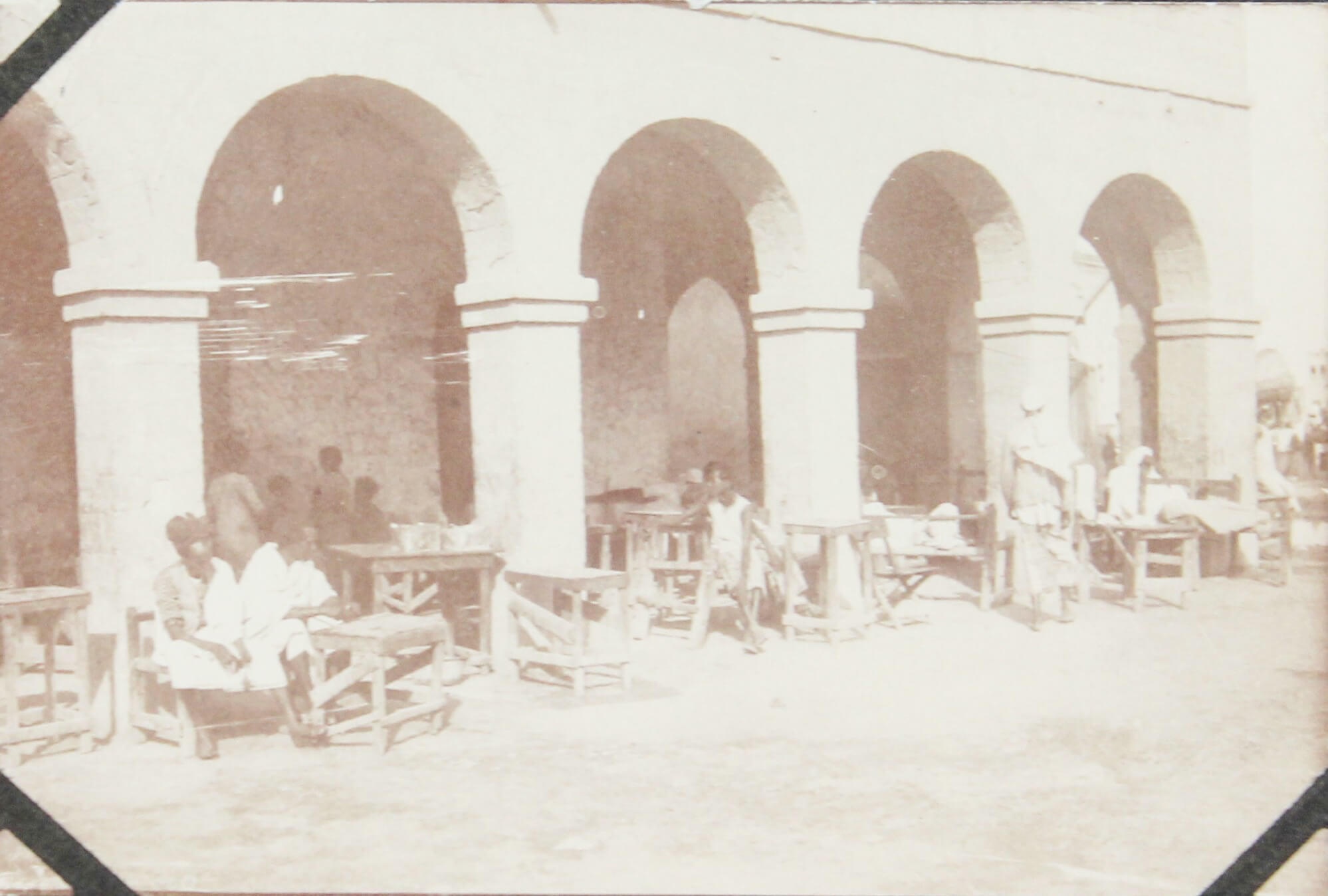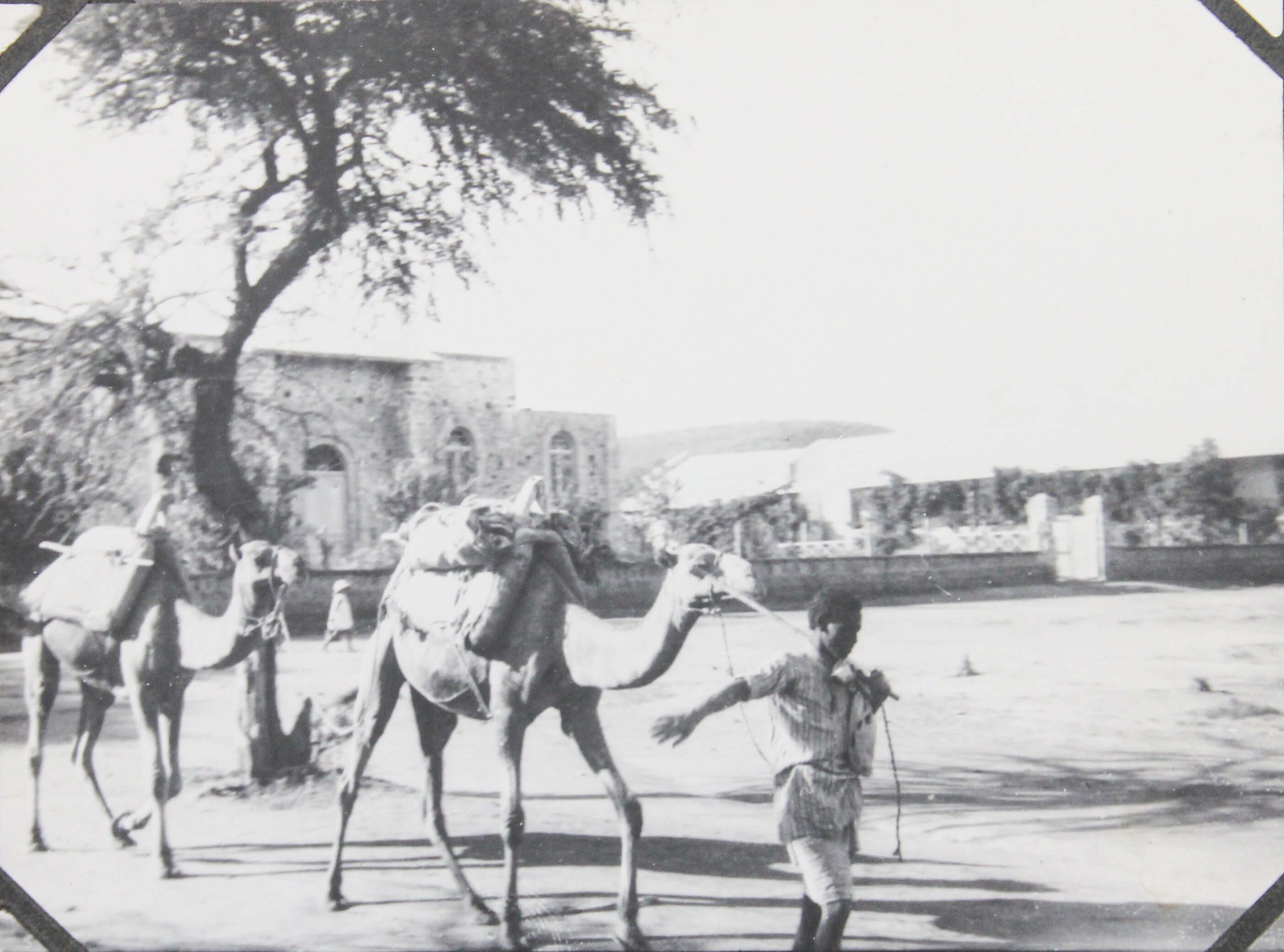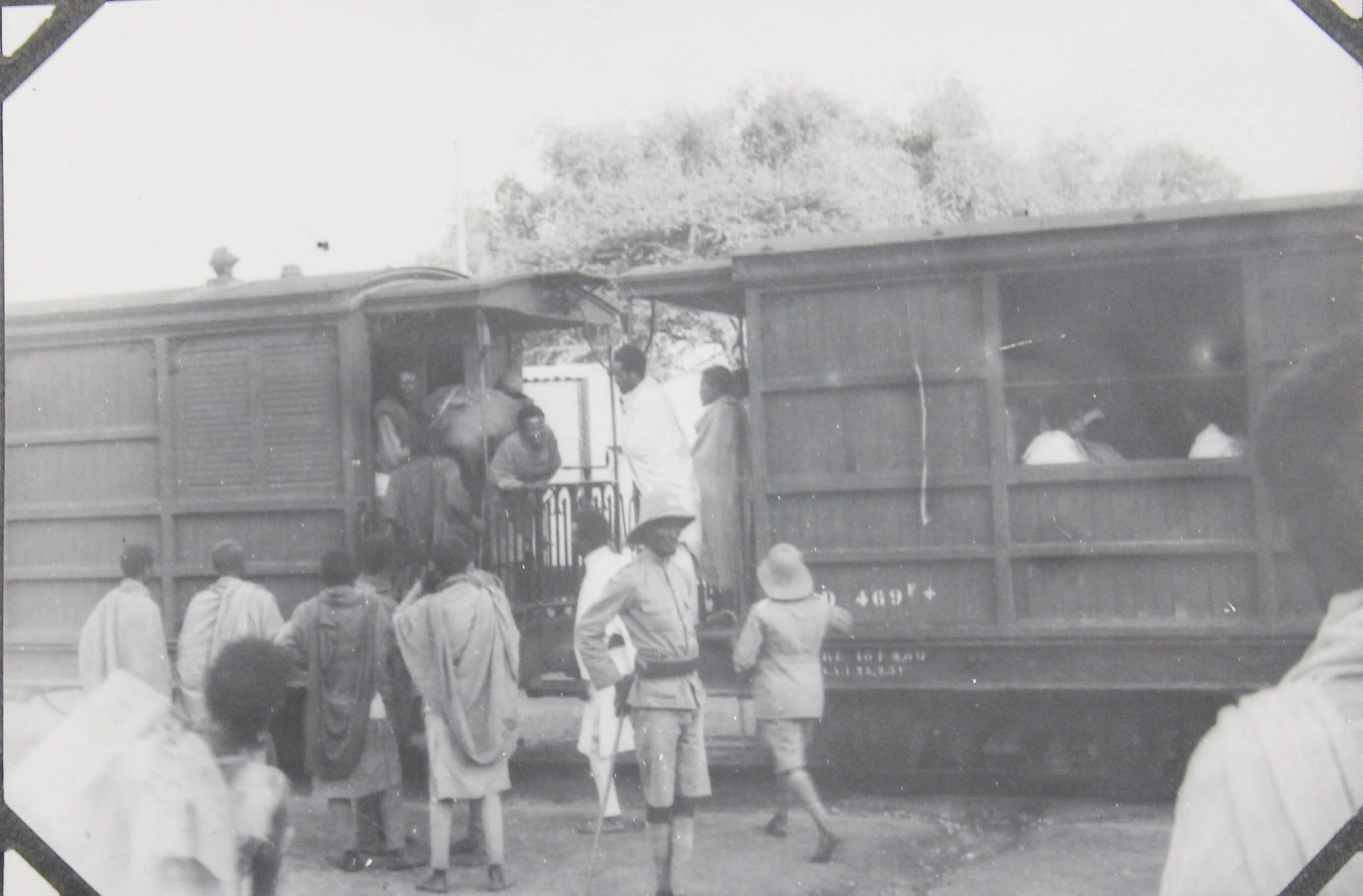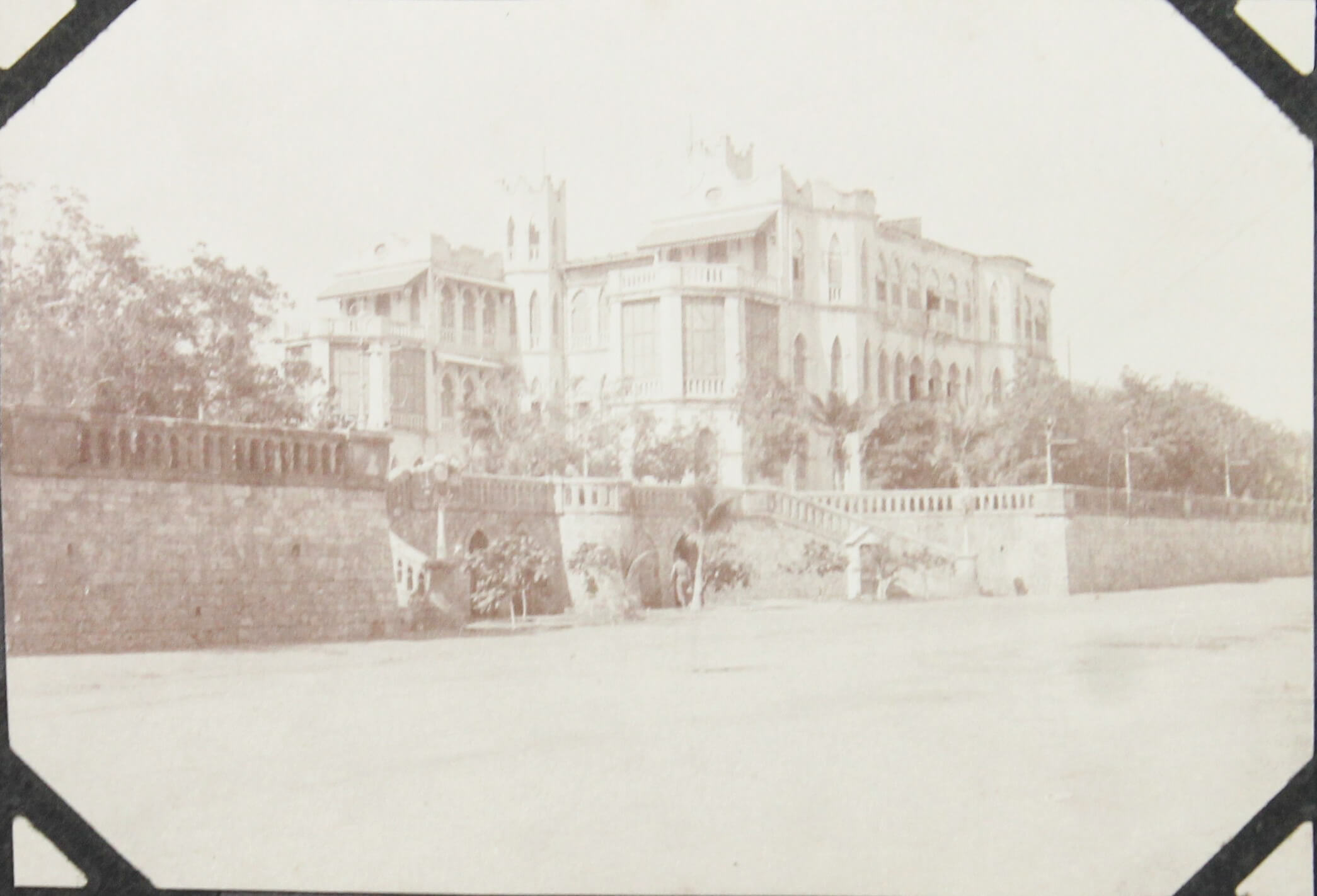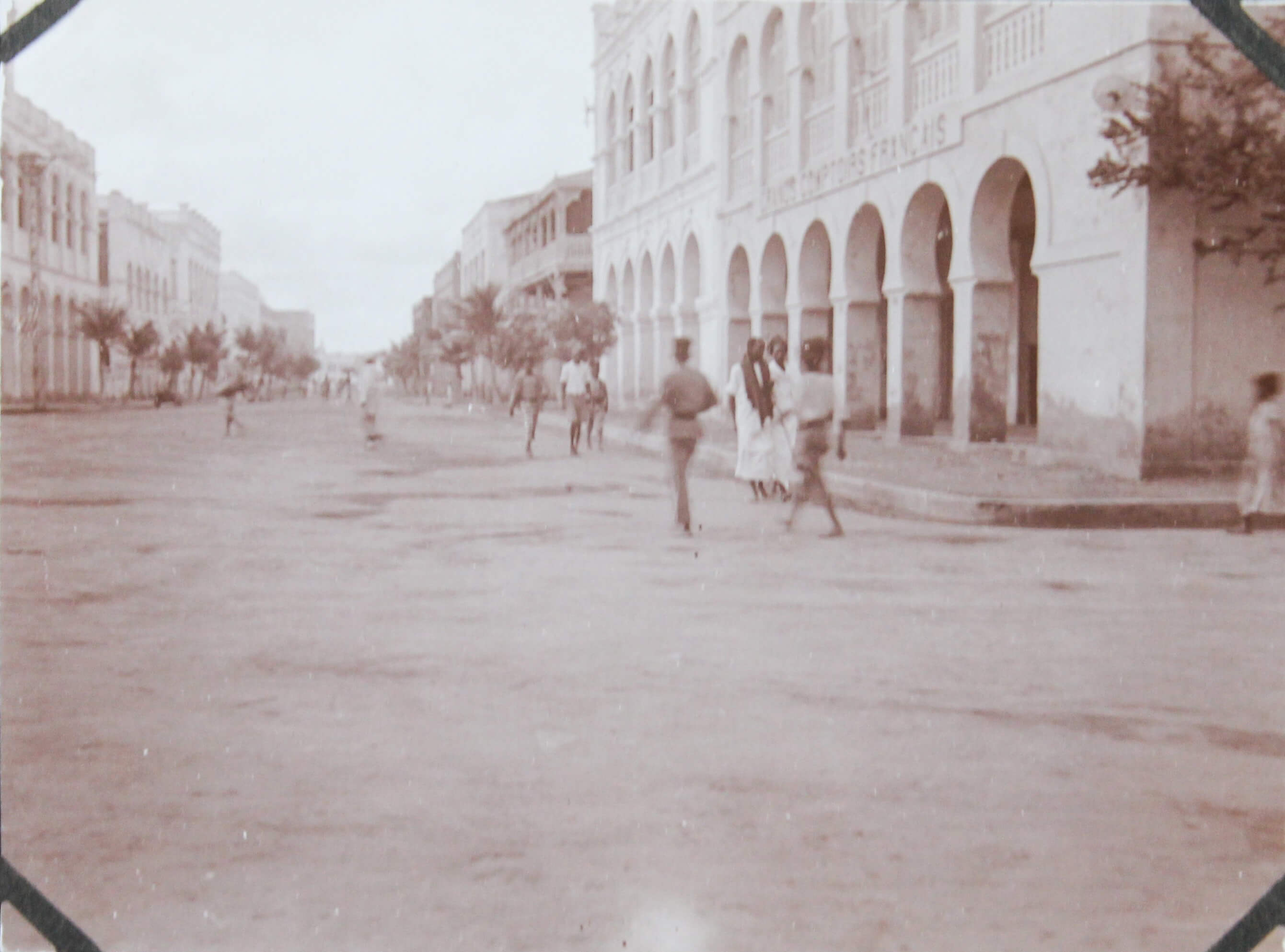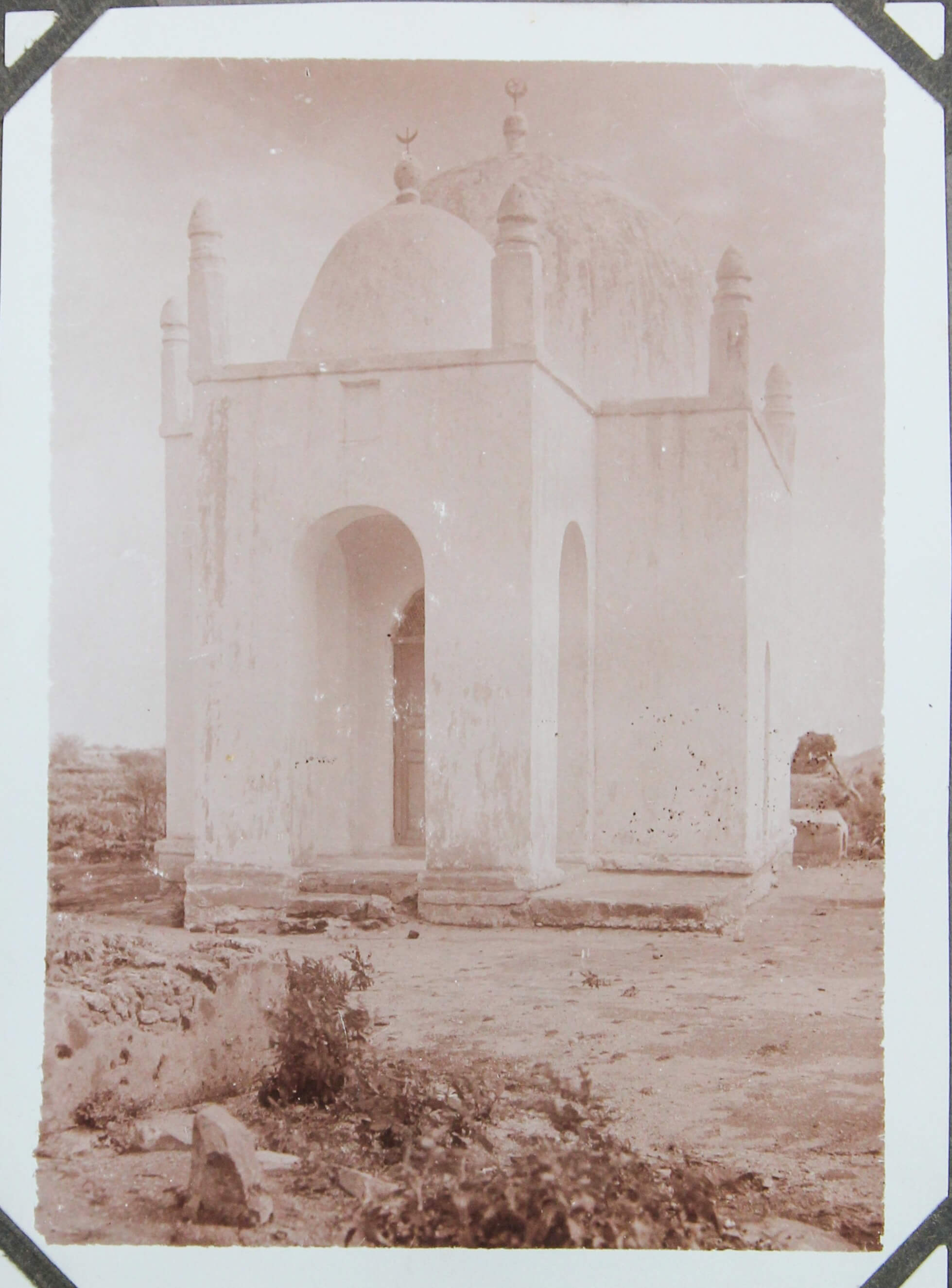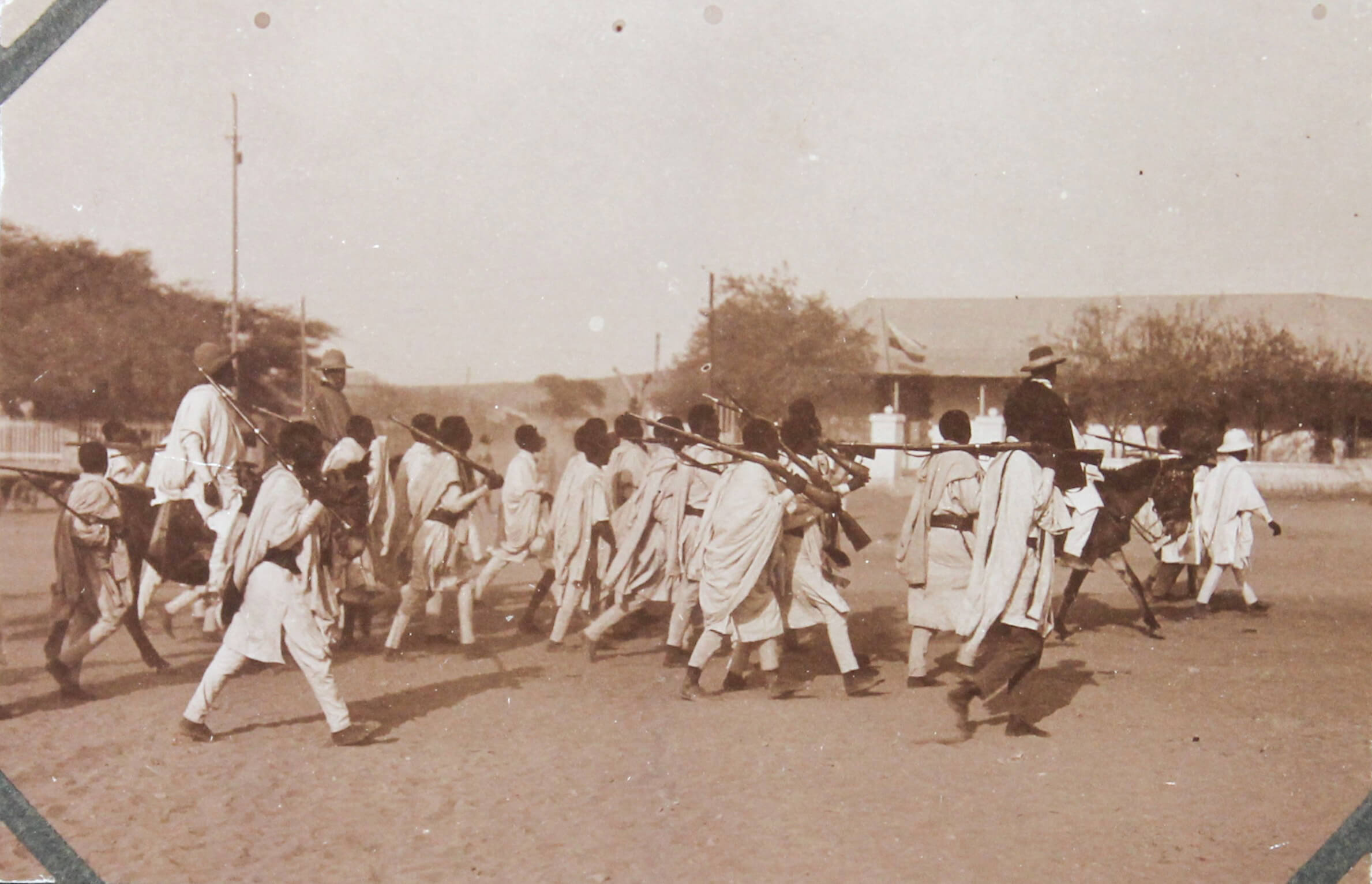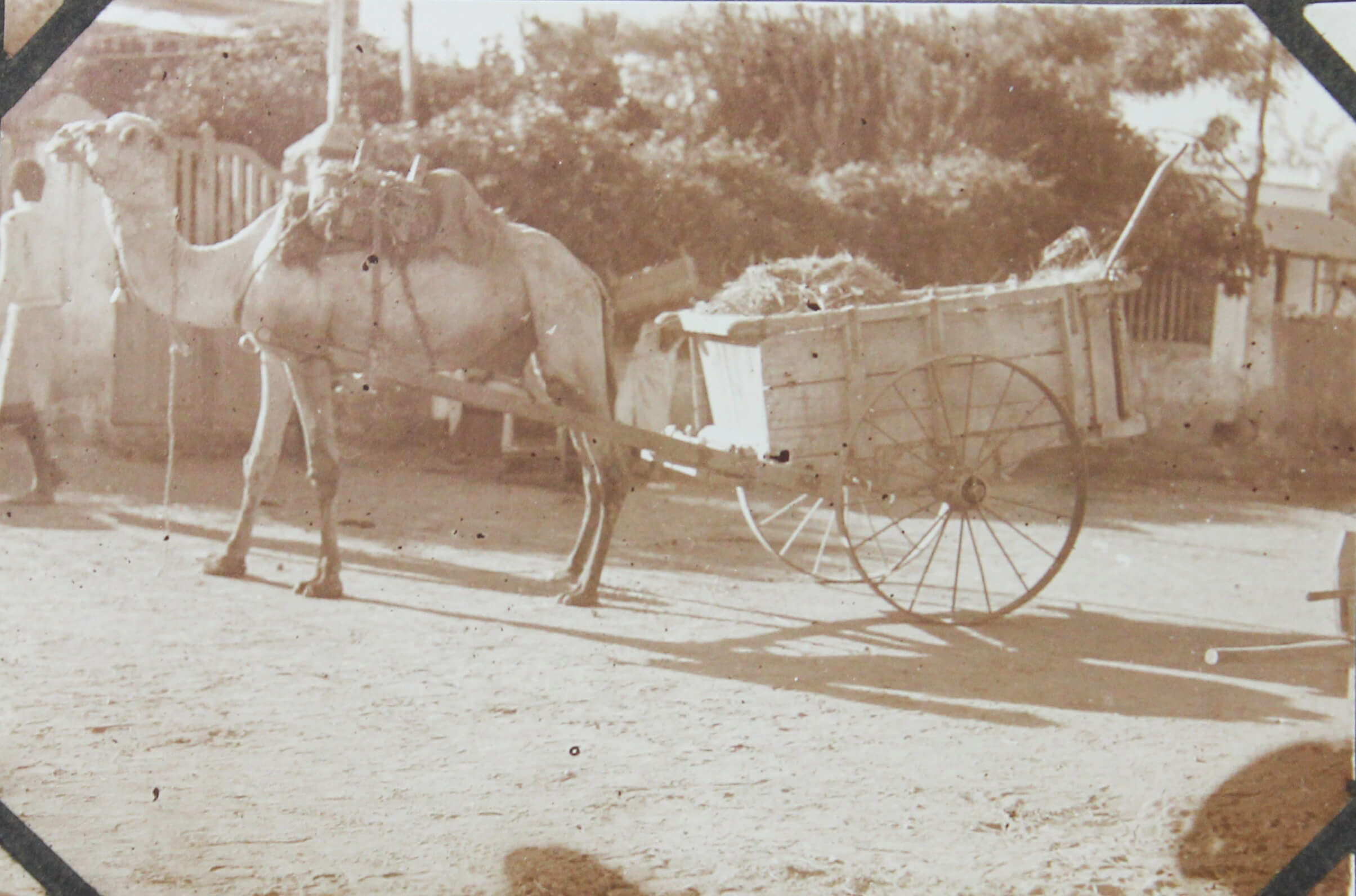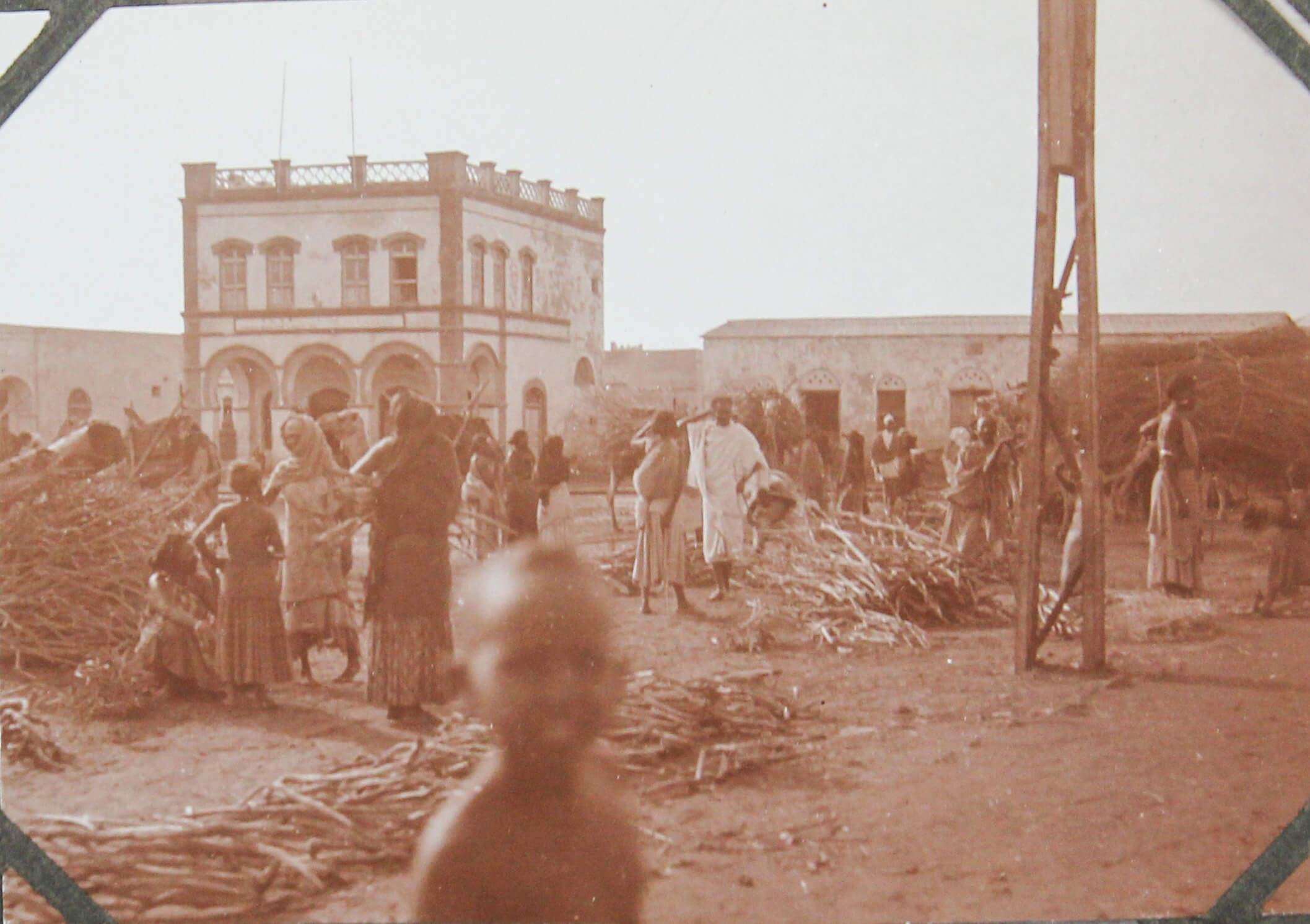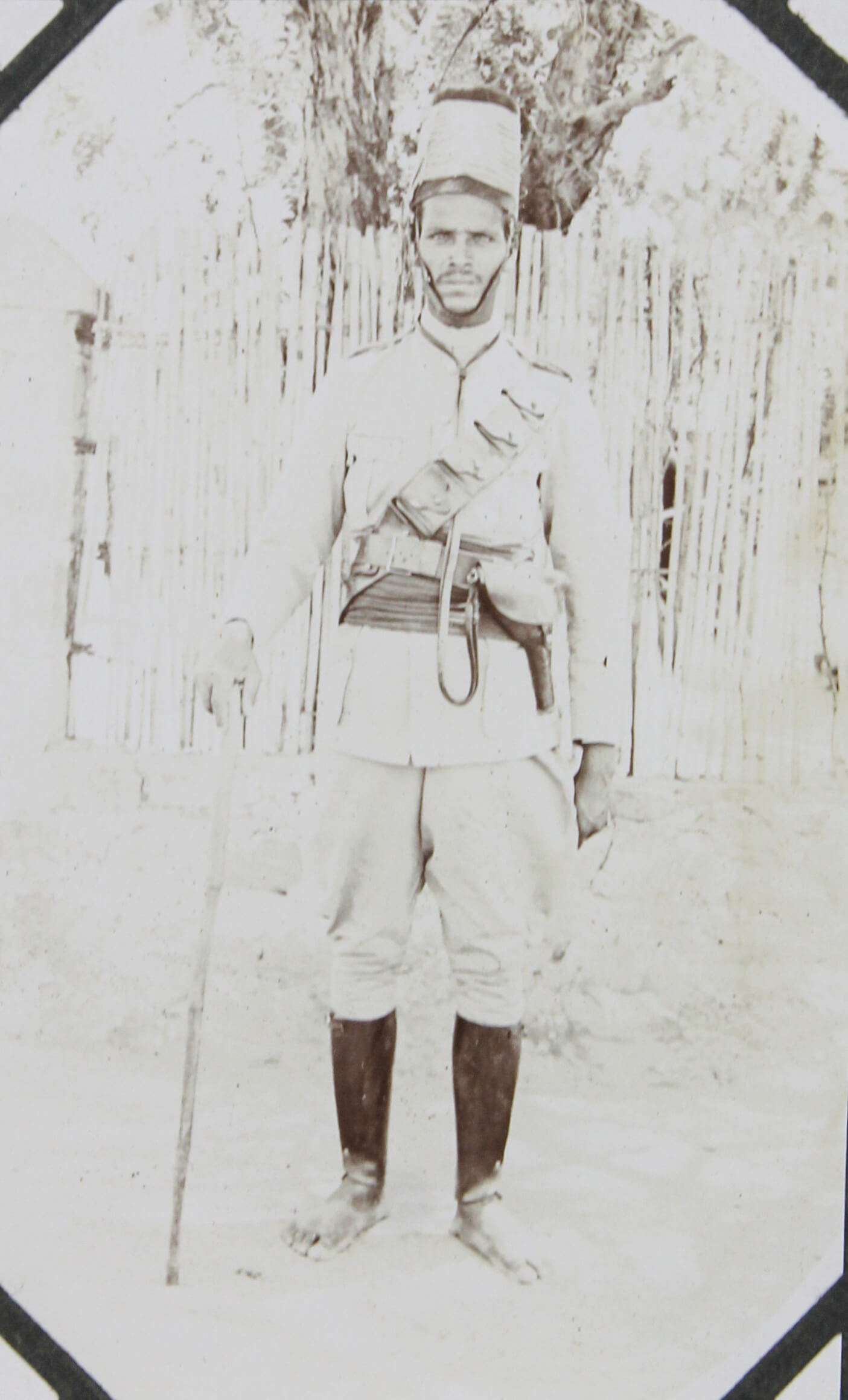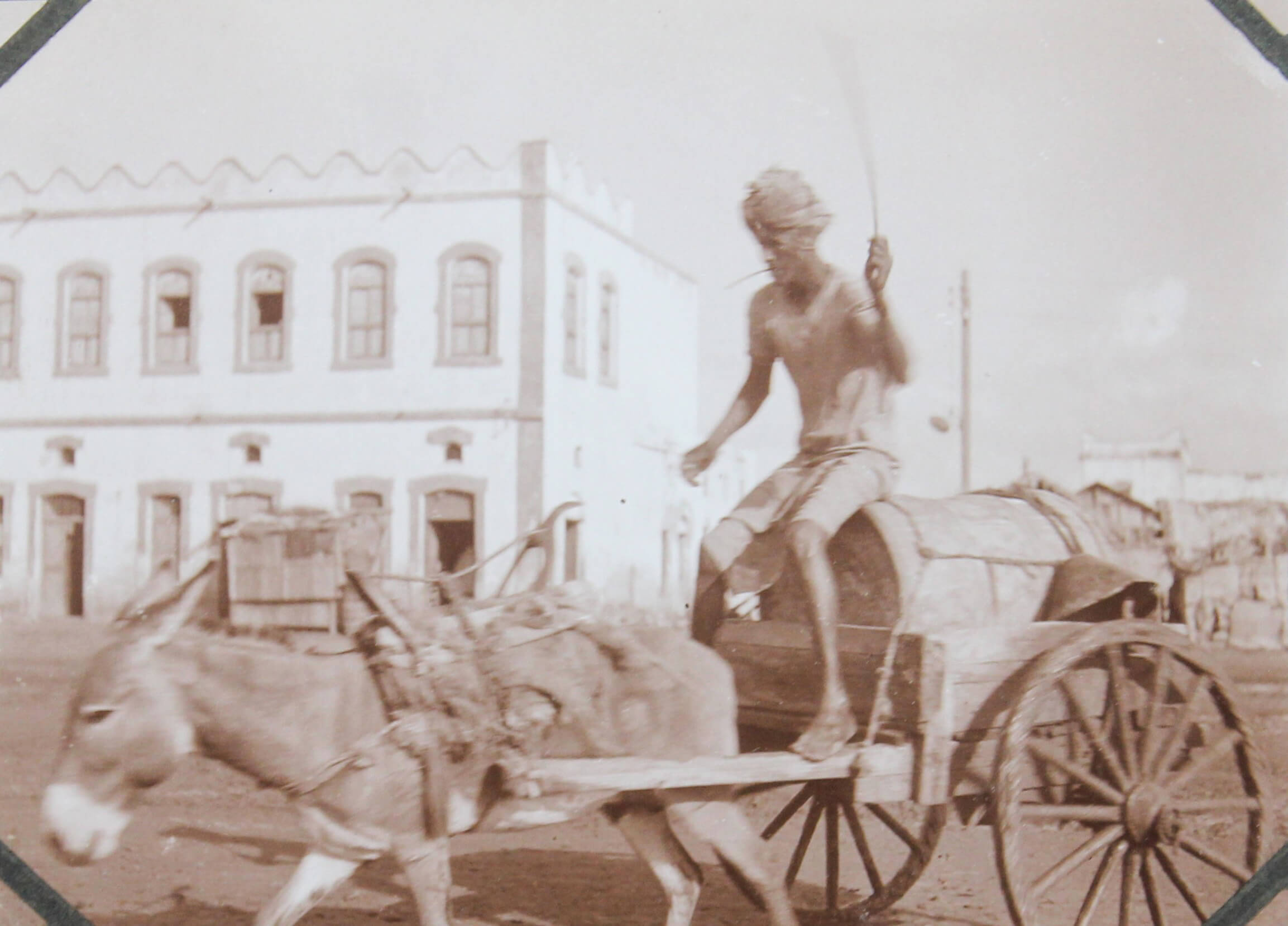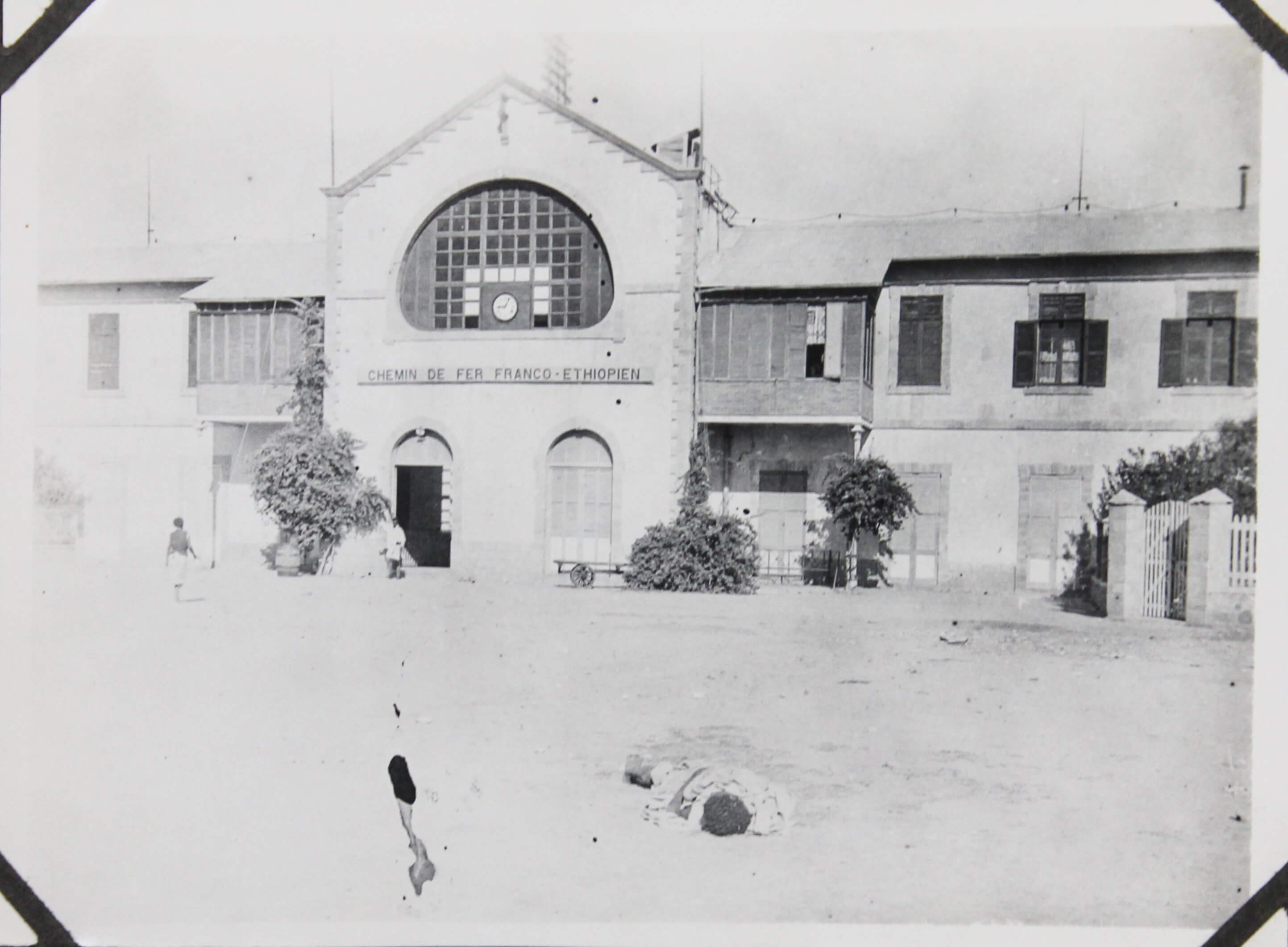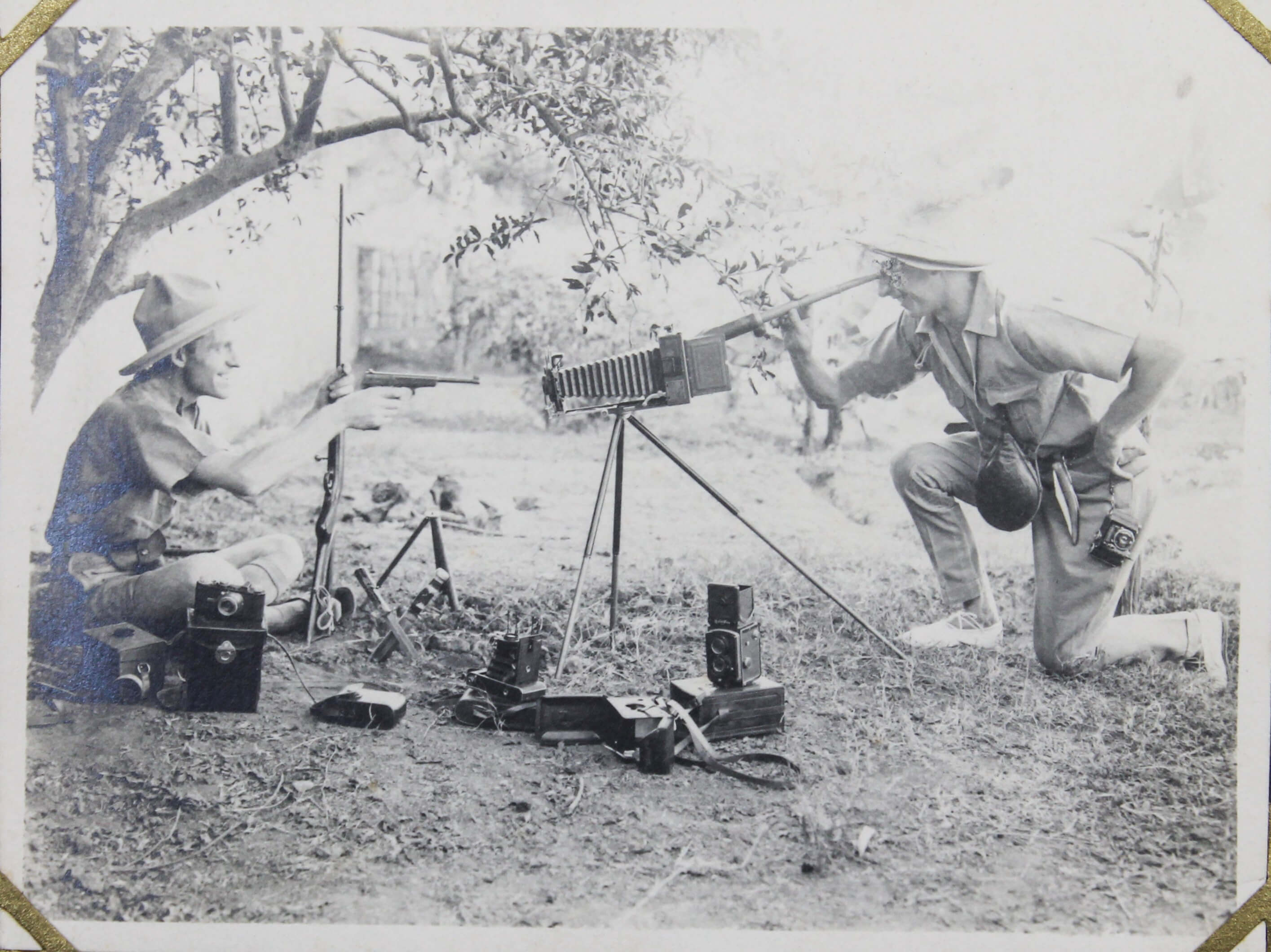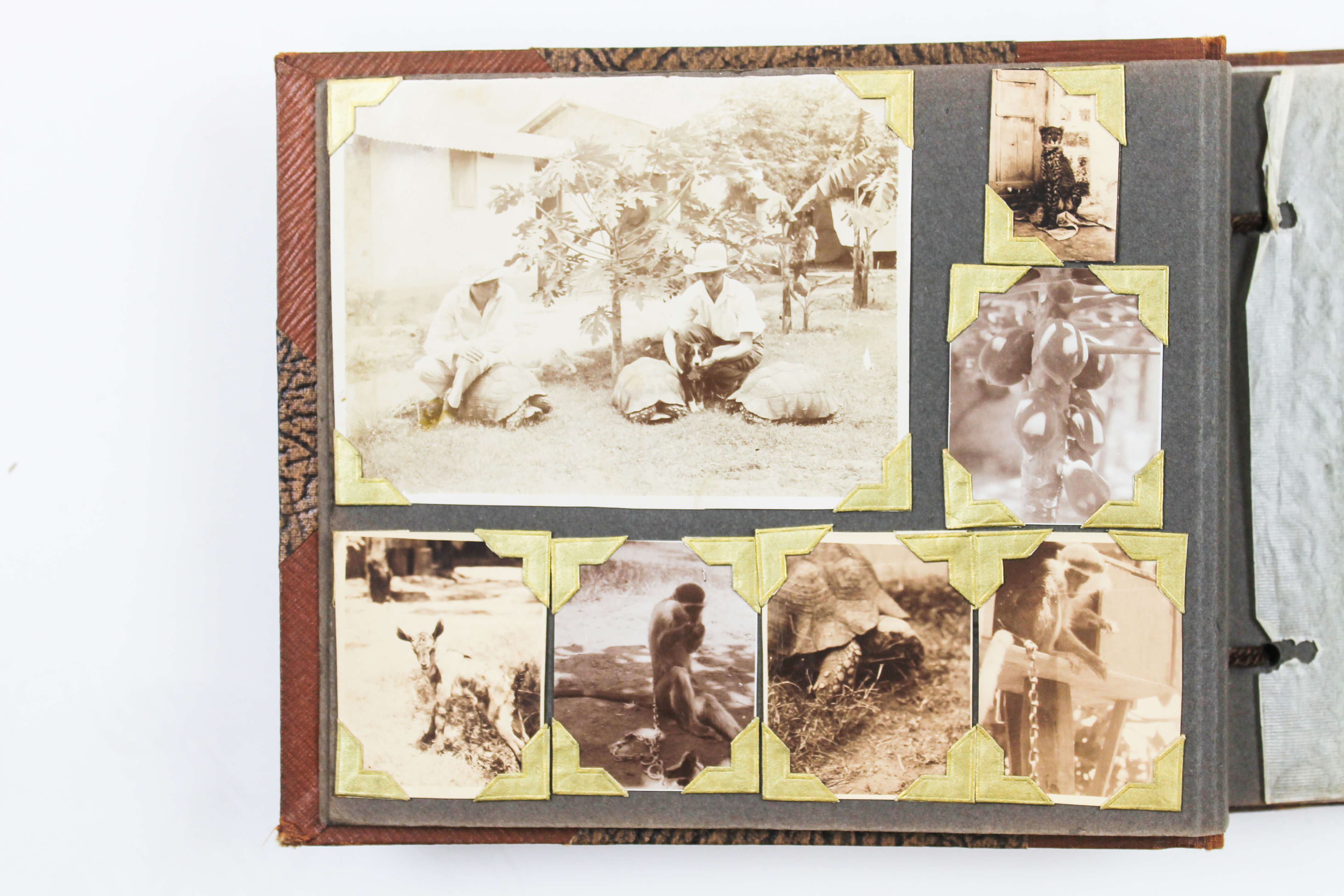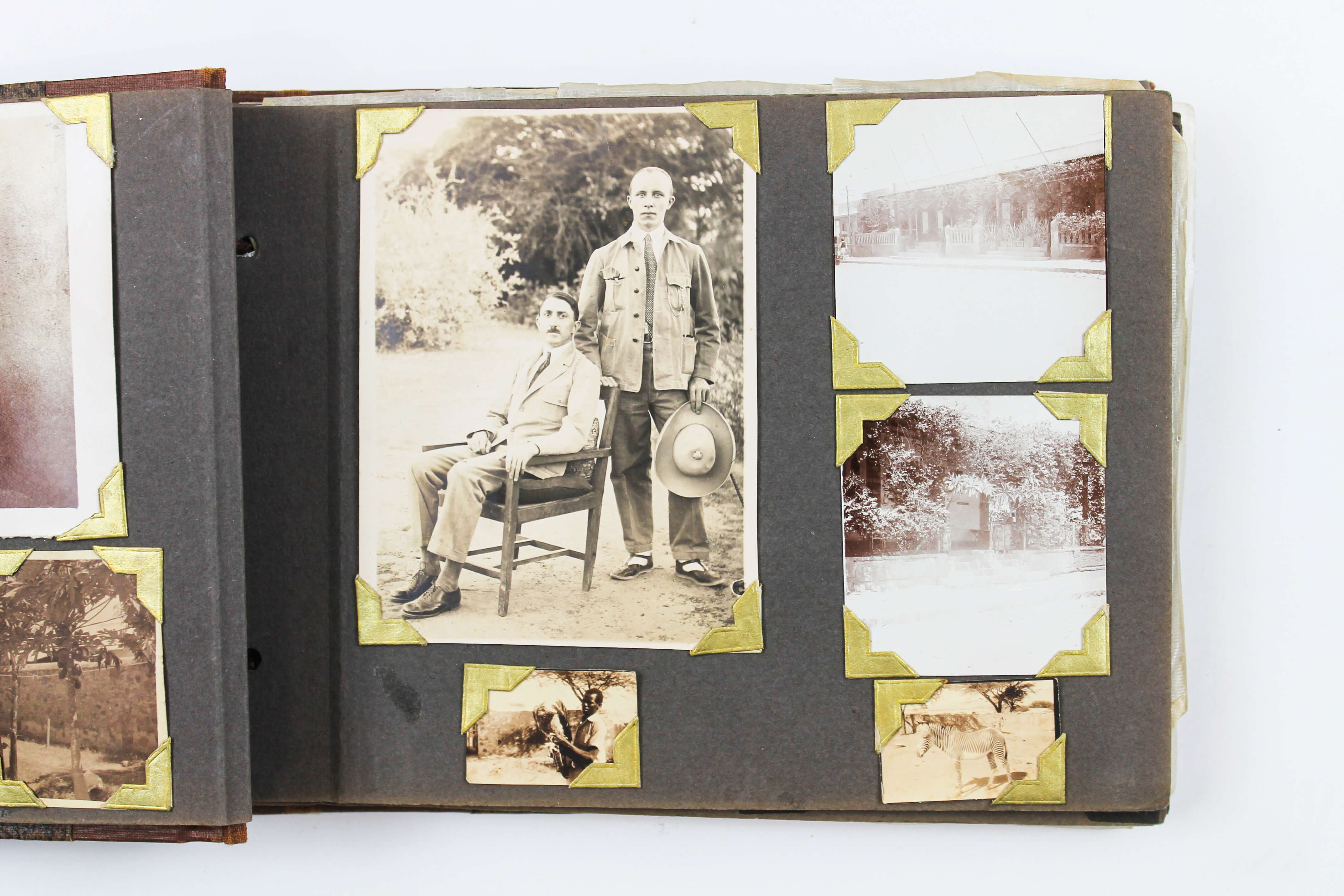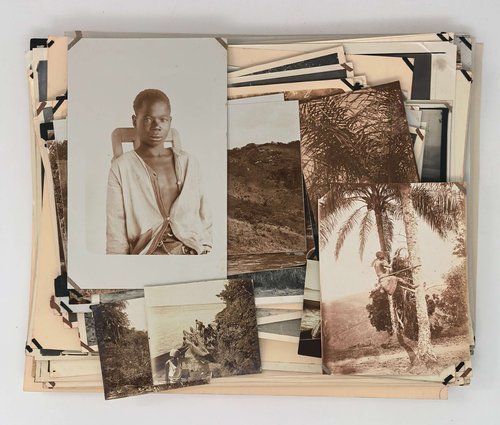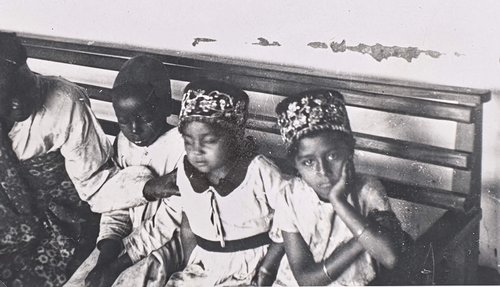


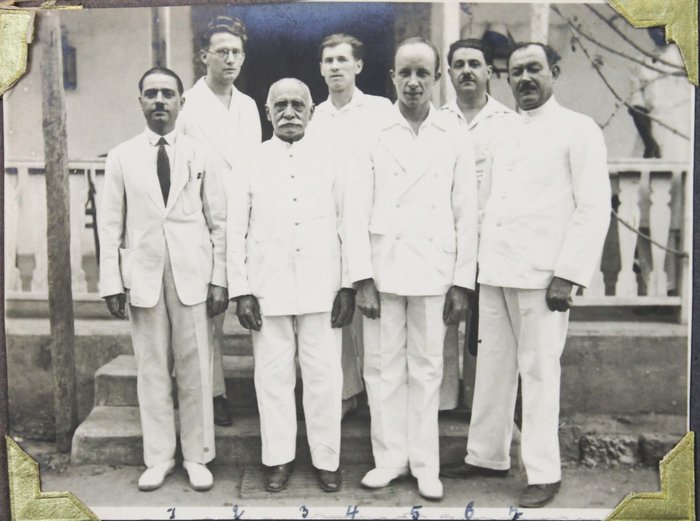

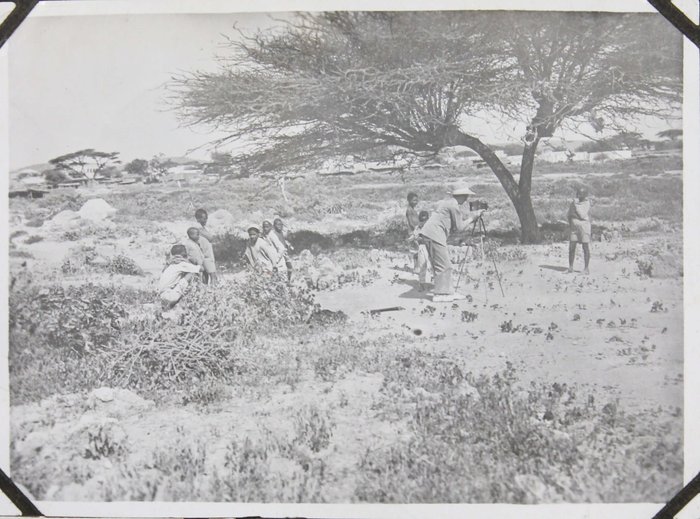

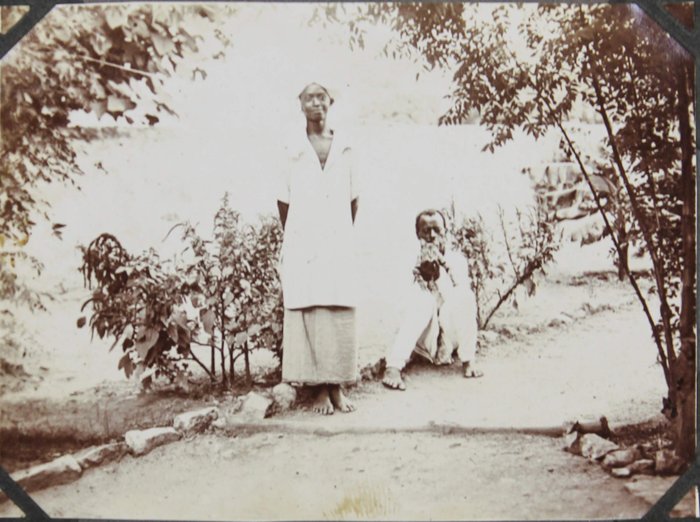
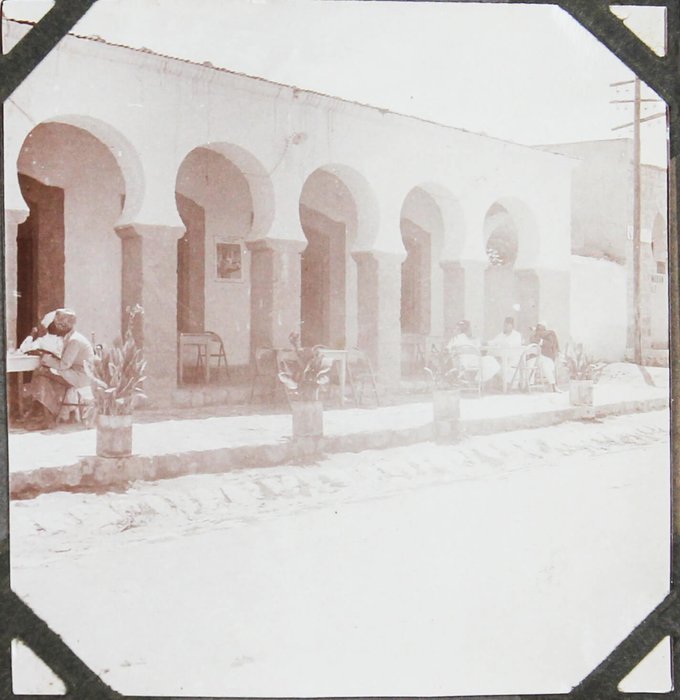

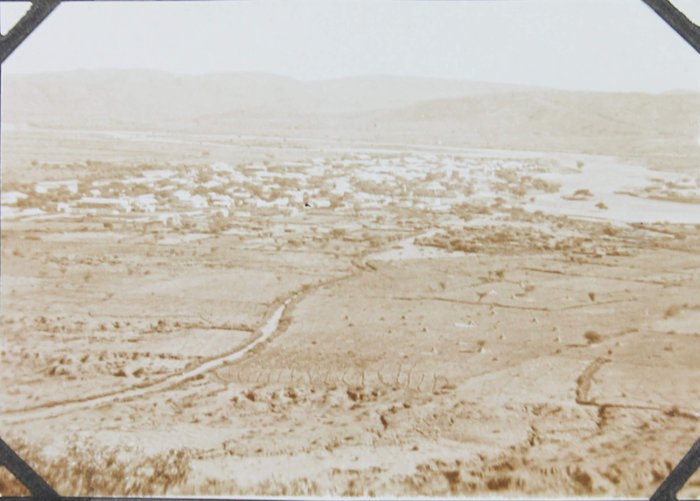



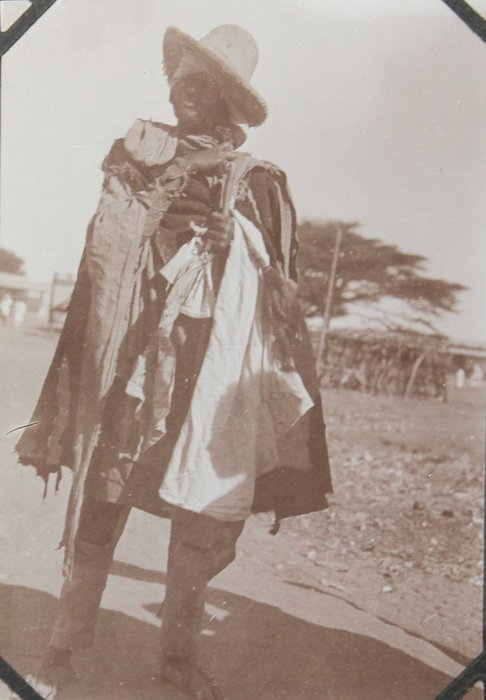

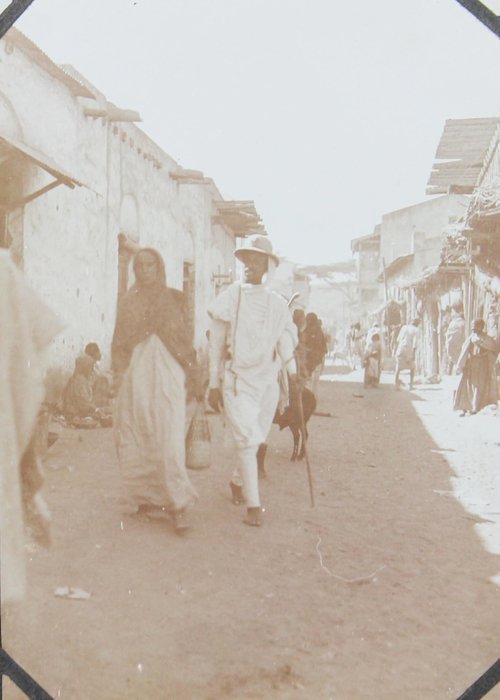
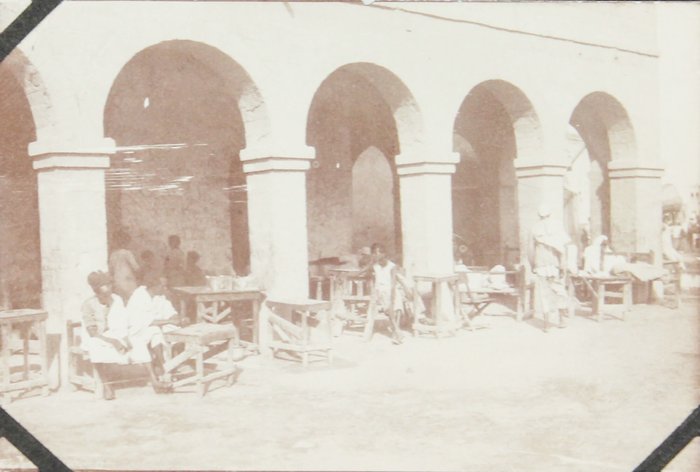
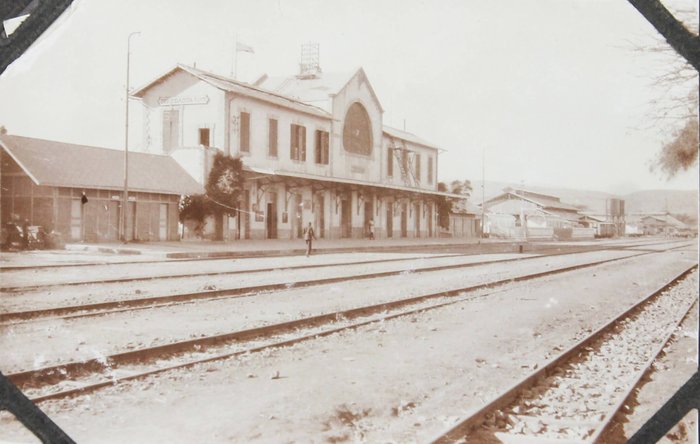
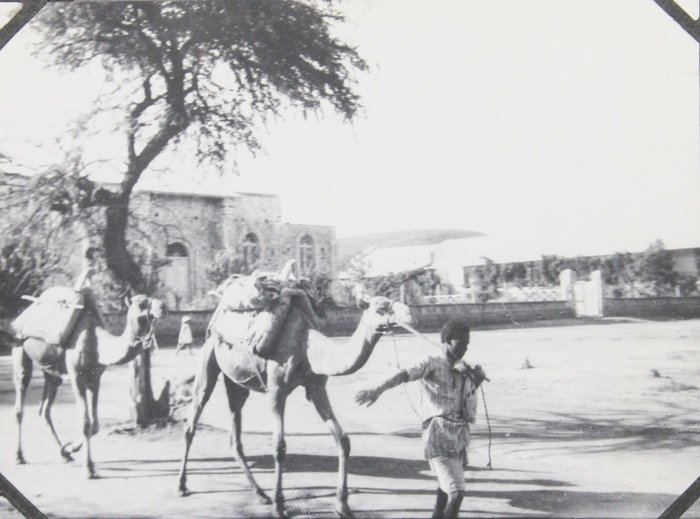
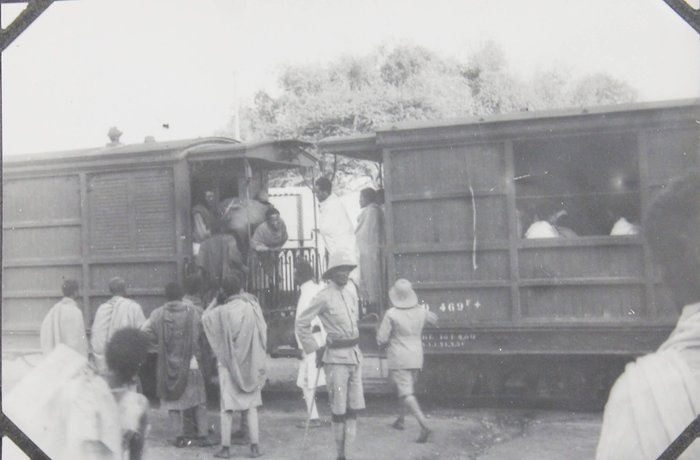
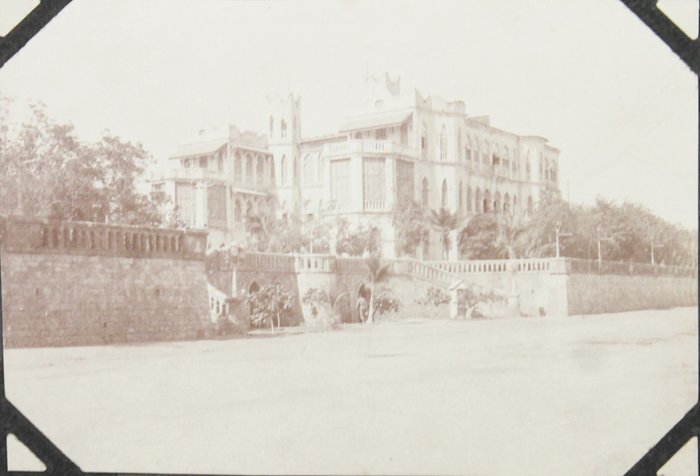

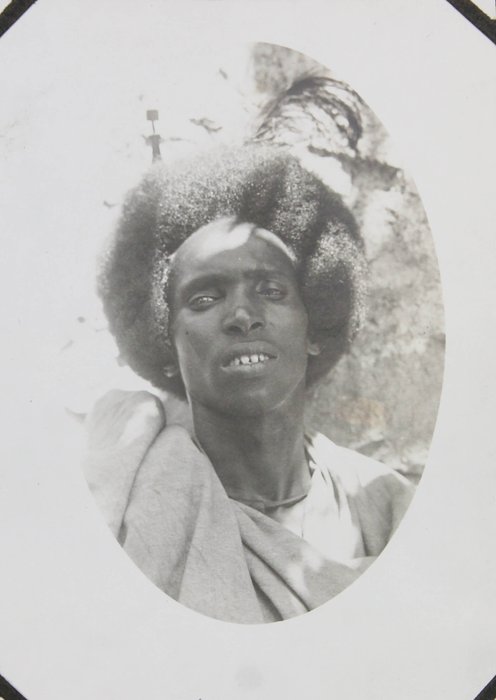
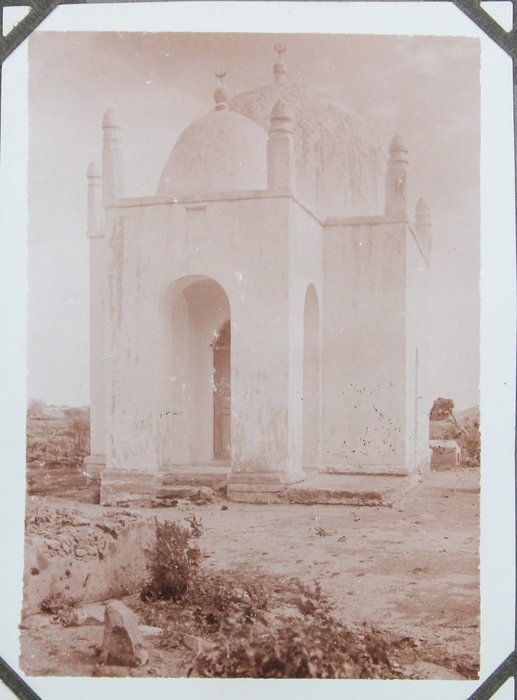

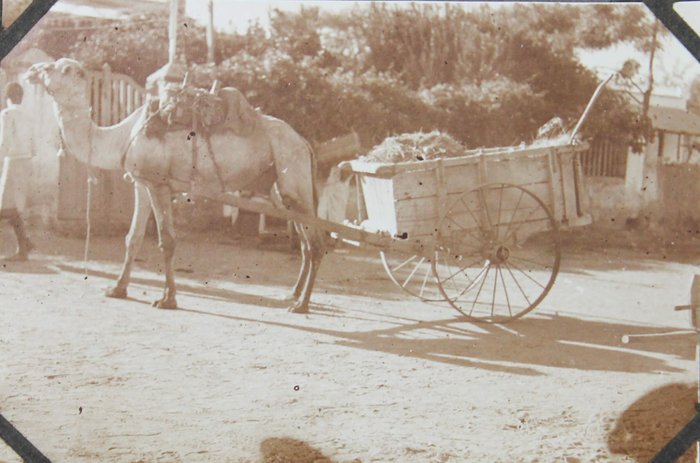

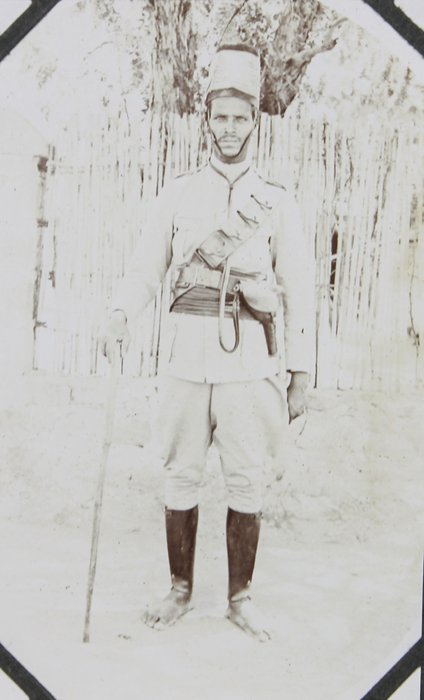

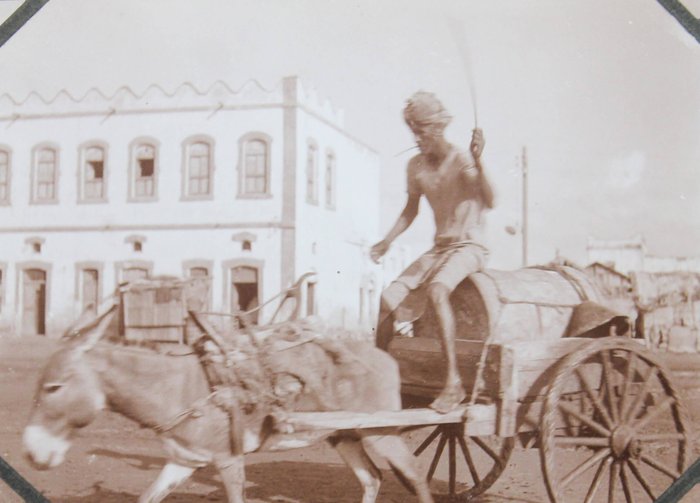
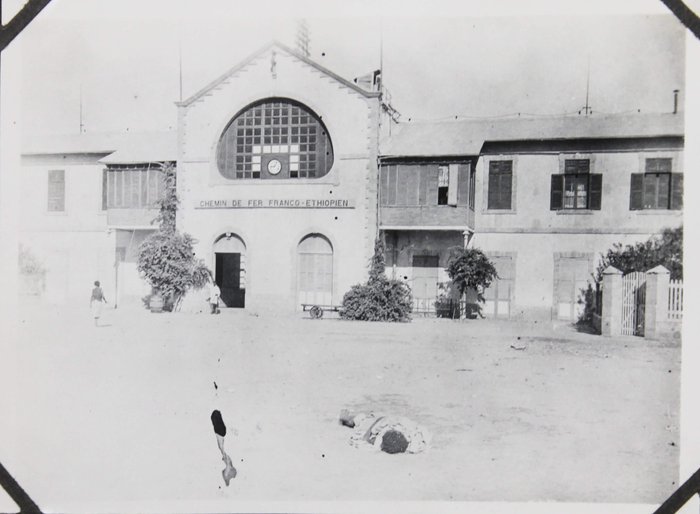

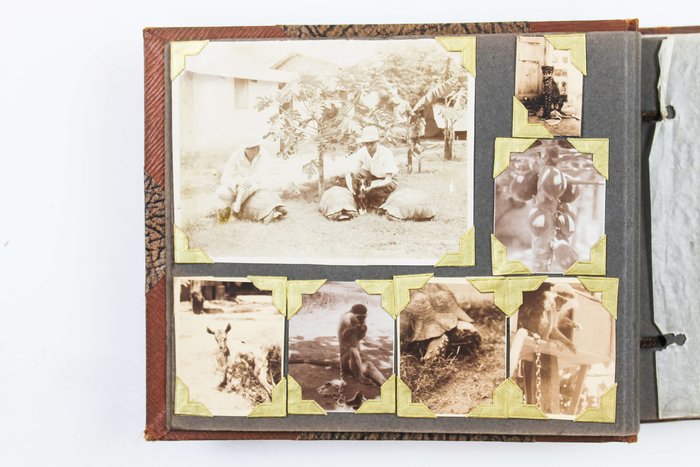
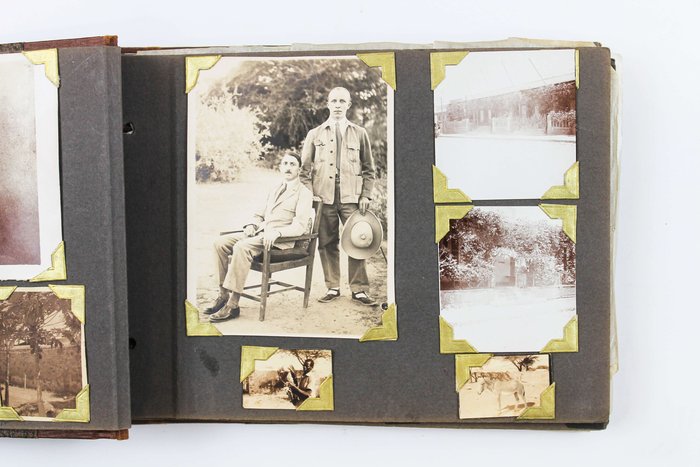
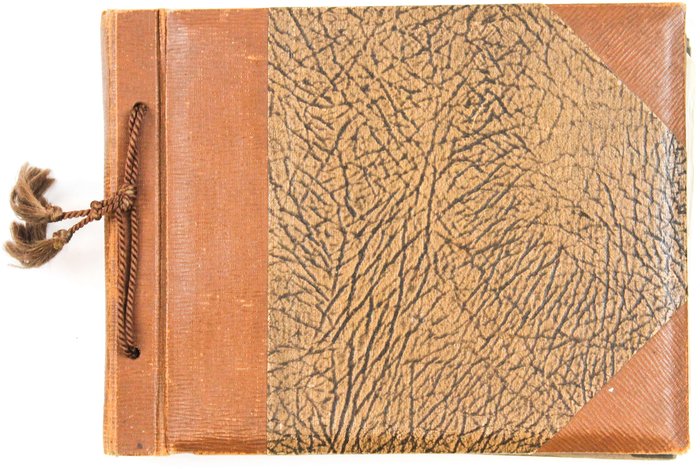
#PE1
Ca. 1929-1935
Oblong Octavo album (ca.15,8x20,6 cm). 25 card stock leaves (four blank). With 104 mounted original gelatin silver photographs (including ca. five real life photo postcards) from ca. 9x13 cm (3 ½ x 5 in) to 2,5x3,7 cm (1 x 1 ½ in). Most photos with French captions on the verso, several photos dated. Period brown cloth fastened with a string; marbled endpapers; eight tracing papers preserved; with period gift inscription on the first page: “Album tante Louise / Son neveu L. Roussel” Mild silvering, one photo with a small piece detached at the lower right corner, but overall a very good album with strong, interesting photos.
Historically significant collection of lively vernacular photographs documenting the French presence in Dire Dawa on the eve of the Italian occupation of Ethiopia.
In the late 1920s and early 1930s, Dire Dawa was a bustling commercial hub on the Addis Ababa–Djibouti railway, linking Ethiopia to the French-controlled port of Djibouti. The city attracted a diverse population of French and Greek merchants and was dominated by French administration. After the Second Italo-Ethiopian War, Dire Dawa became part of Italian East Africa until 1941, when it returned to the Ethiopian control.
The album opens with a photo of the compiler, ‘Lucien Roussel,’ who was apparently employed by La Ligue des droits de l’Homme, a French human rights organization. As follows from the captions, League members were present in Dire Dawa from at least 1929, engaging with expatriate communities and monitoring labor, trade, and foreign residents’ rights within the city’s French-dominated environment.
The collection comprises one hundred and four original gelatin silver photographs and real photo postcards, mostly illustrating pre-colonial Dire Dawa. About twenty-five well-executed photos depict the Dire Dawa train station with an approaching locomotive & railway building (with a French sign), St. Michael Church, Dire Dawa Palace, the zoo, a public fountain, a local café, street views, and what appears to be the hotel where the compiler stayed. Over twenty candid urban scenes, some close-up, vividly portray Ethiopian locals in traditional dress transporting water and goods, posing for photographs, dining at a café, busily browsing market stalls, and riding camels and donkeys. The other photographs from Dire Dawa mainly show the compiler and his colleagues in local attire, in white uniform, with zoo animals, or exploring the surrounding wilderness.
About thirty photographs document the compiler’s stay at the port of Djibouti, then part of the French Somaliland. The images feature early views of the Governor’s Palace, the Hamoudi Mosque, Hotel d’Europe, the Al Sada Mosque, “Grands Comptoirs Francais” on the Abussinie St. and other notable sites. The rest of the lively vernacular photographs mostly depict local people boarding a train, marching with firearms, riding horse- and donkey-drawn carts, posing in military uniforms, and engaging in diverse daily activities. There are also two interesting photos of the compiler and his colleague with early photographic equipment, capturing each other and smiling for the camera.
Overall, historically important collection of original photographs, documenting the early French presence in the occupied Djibouti and pre-colonial Dire Dawa.



